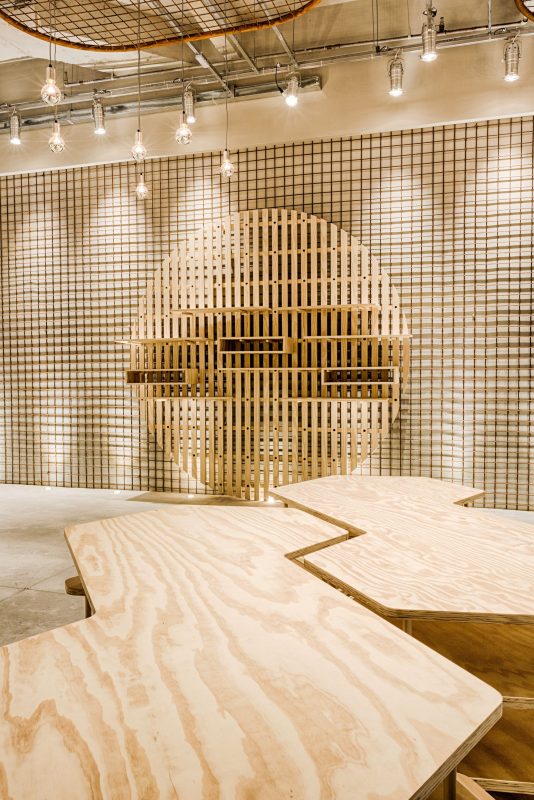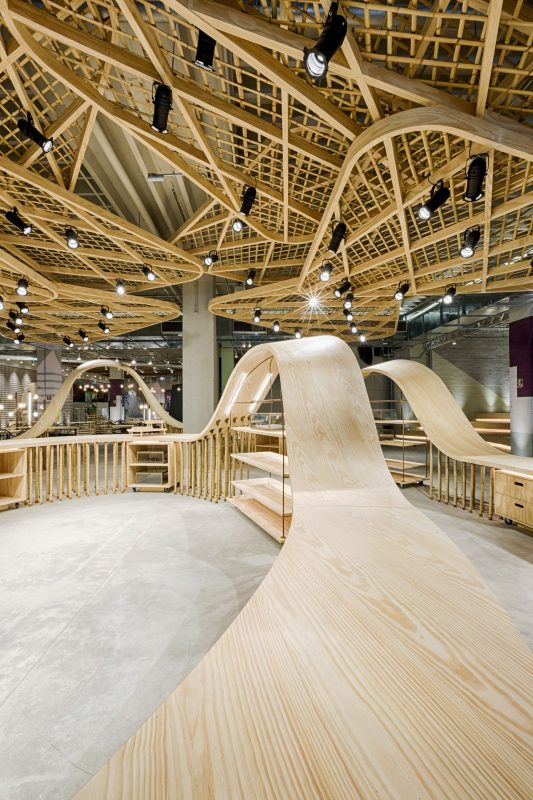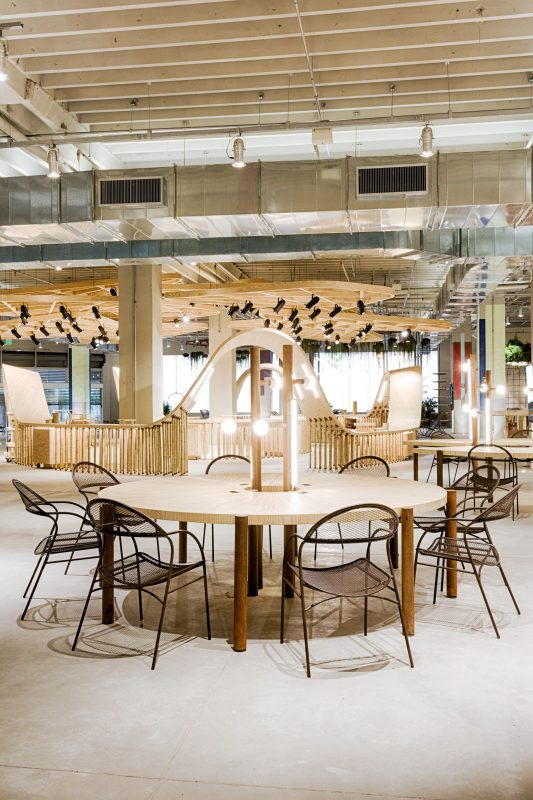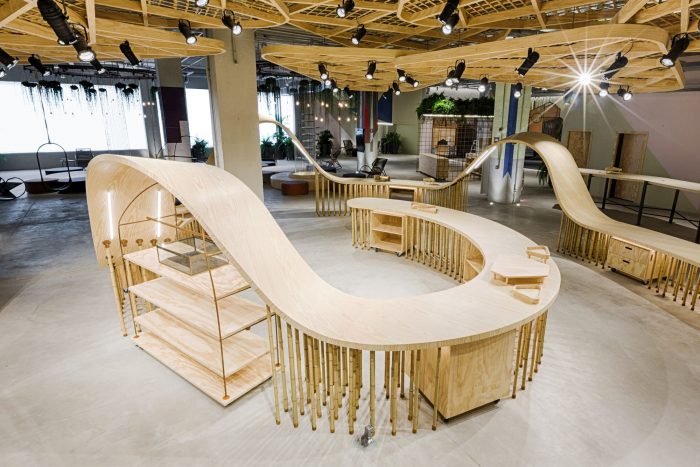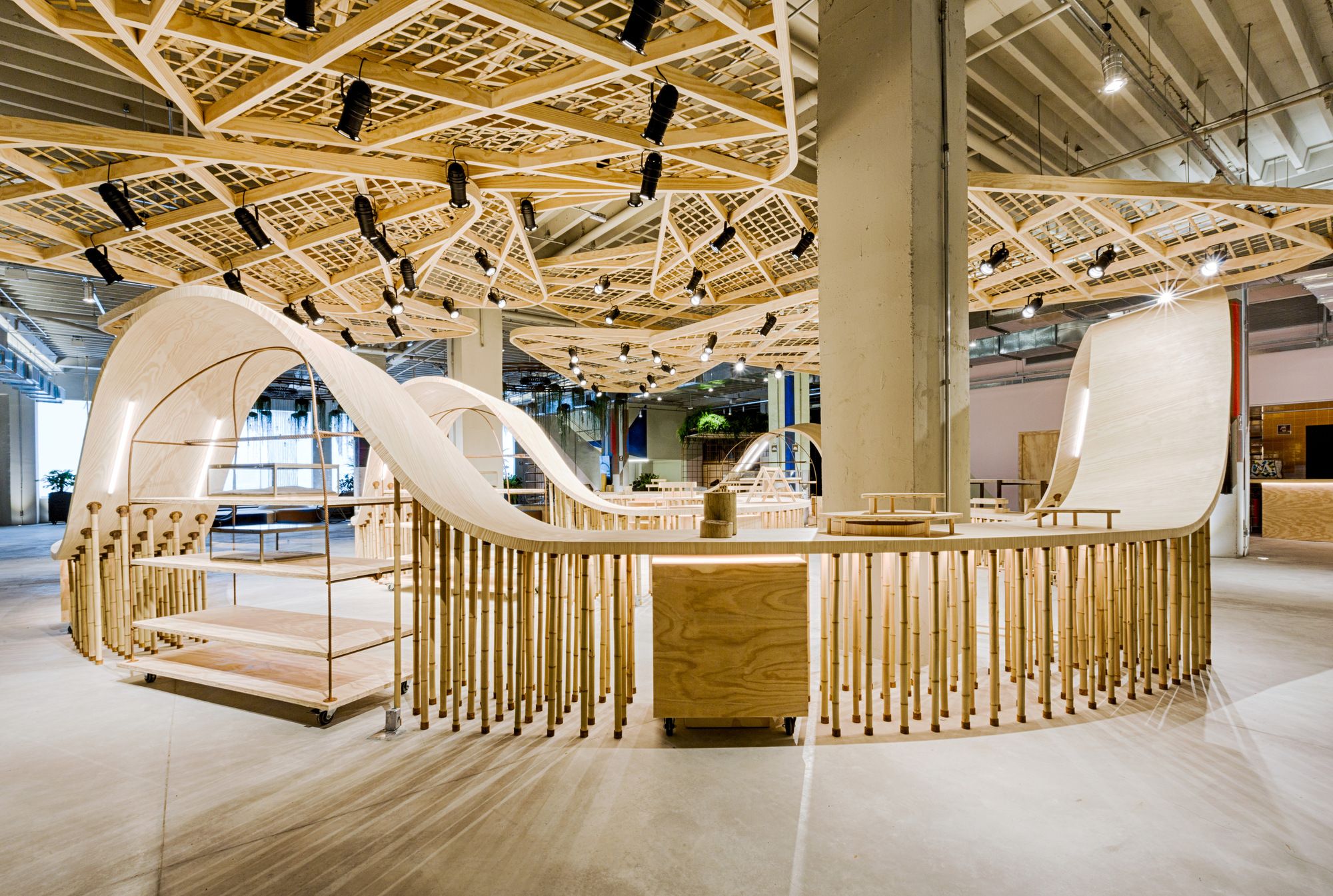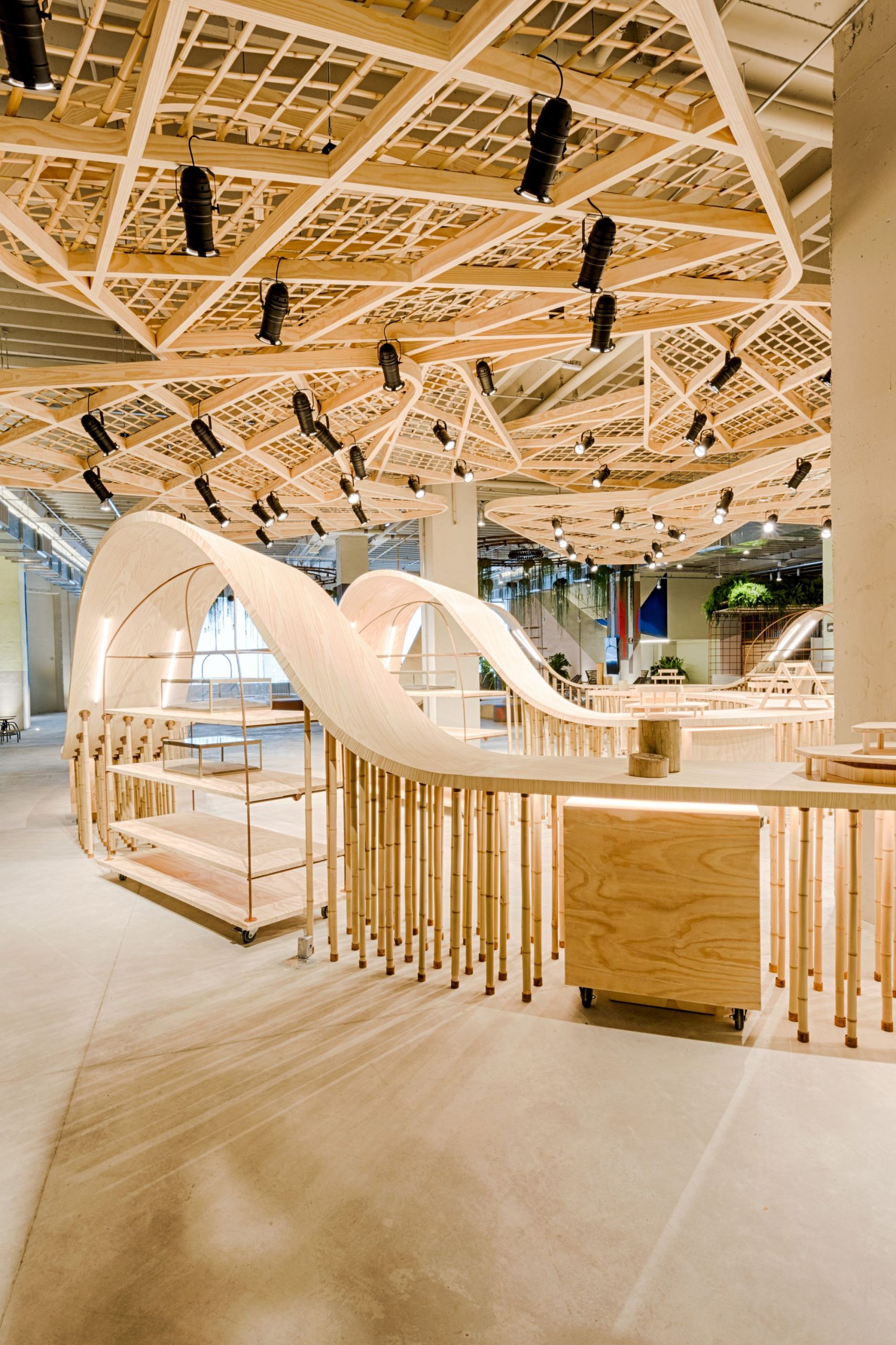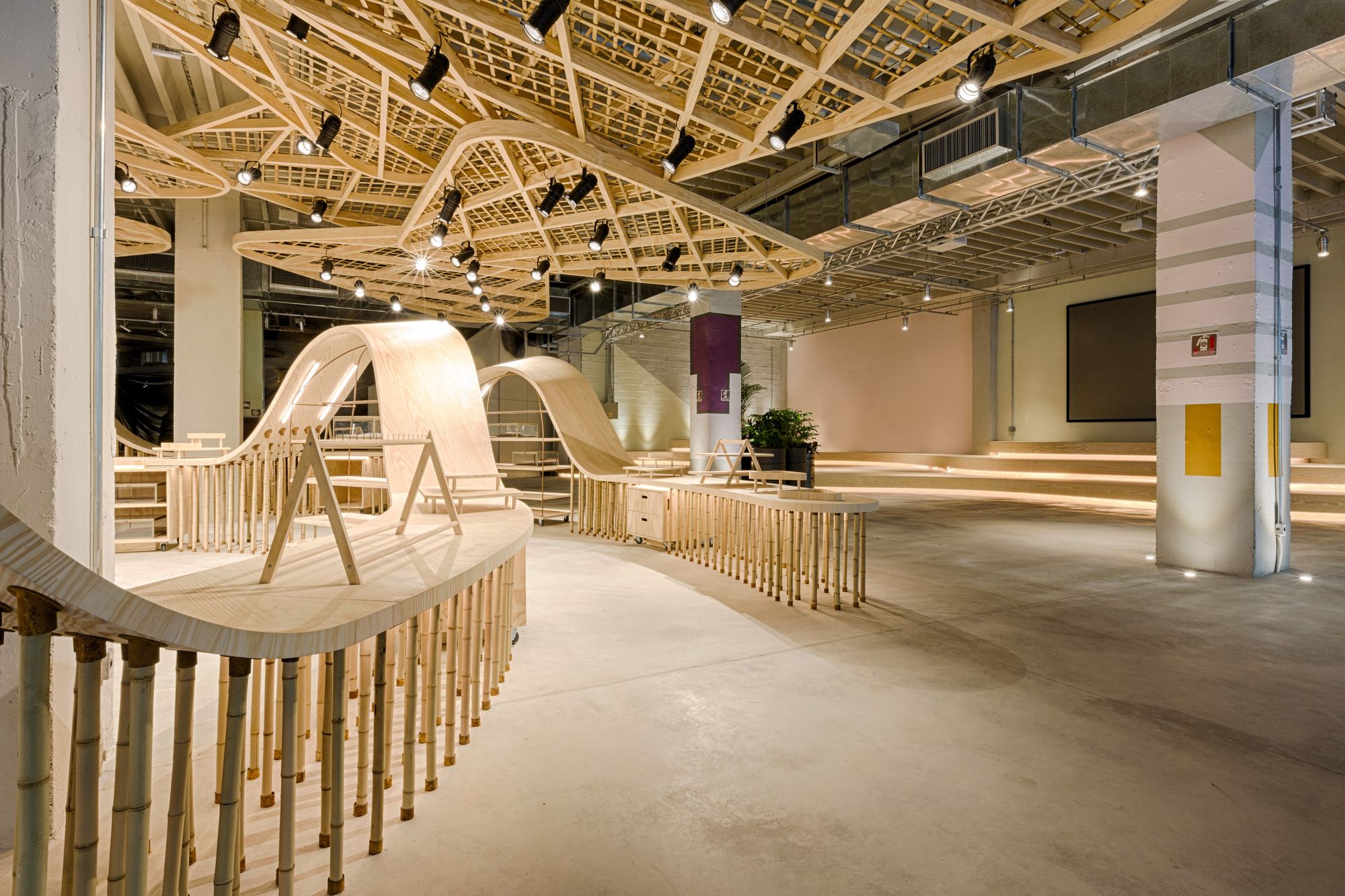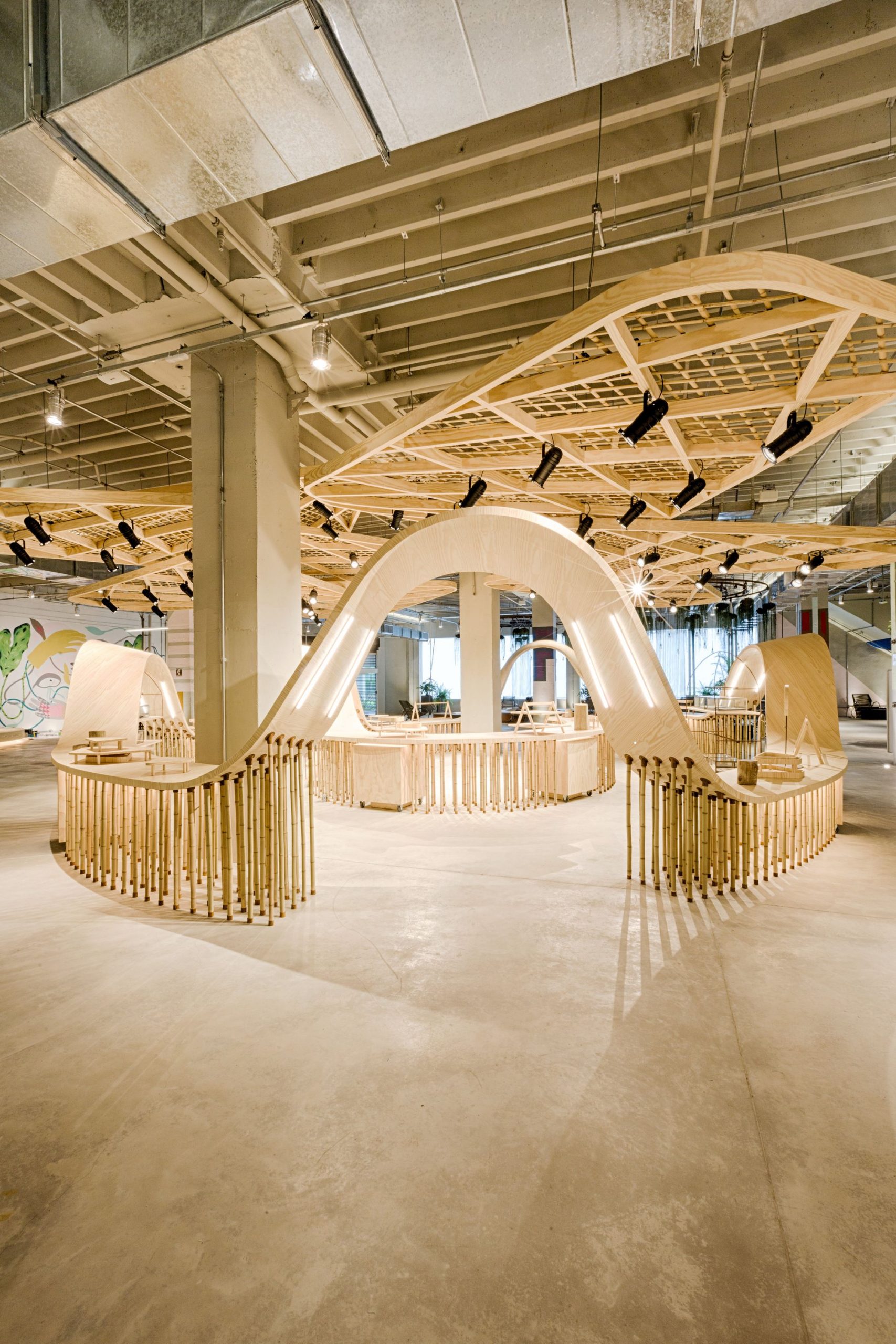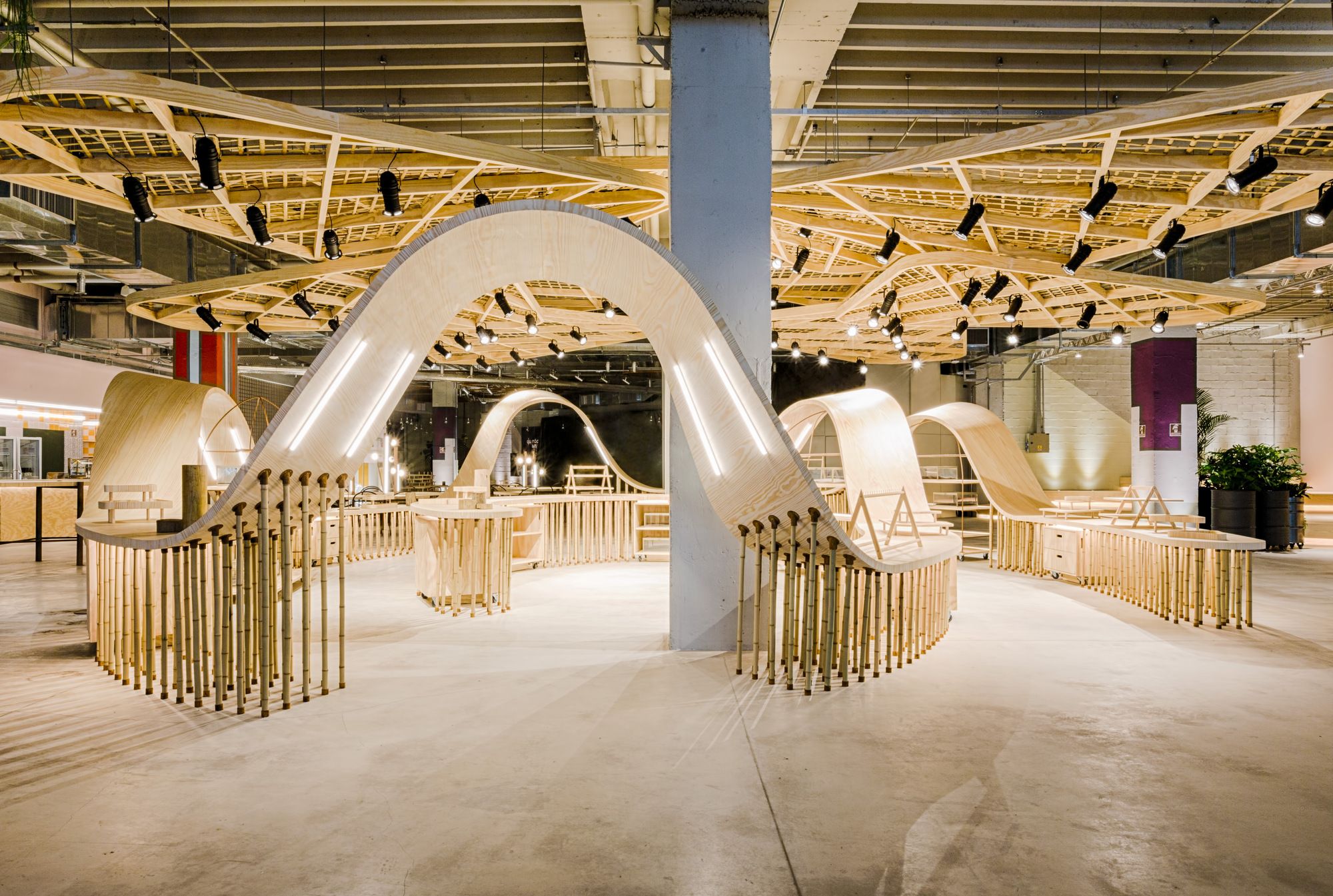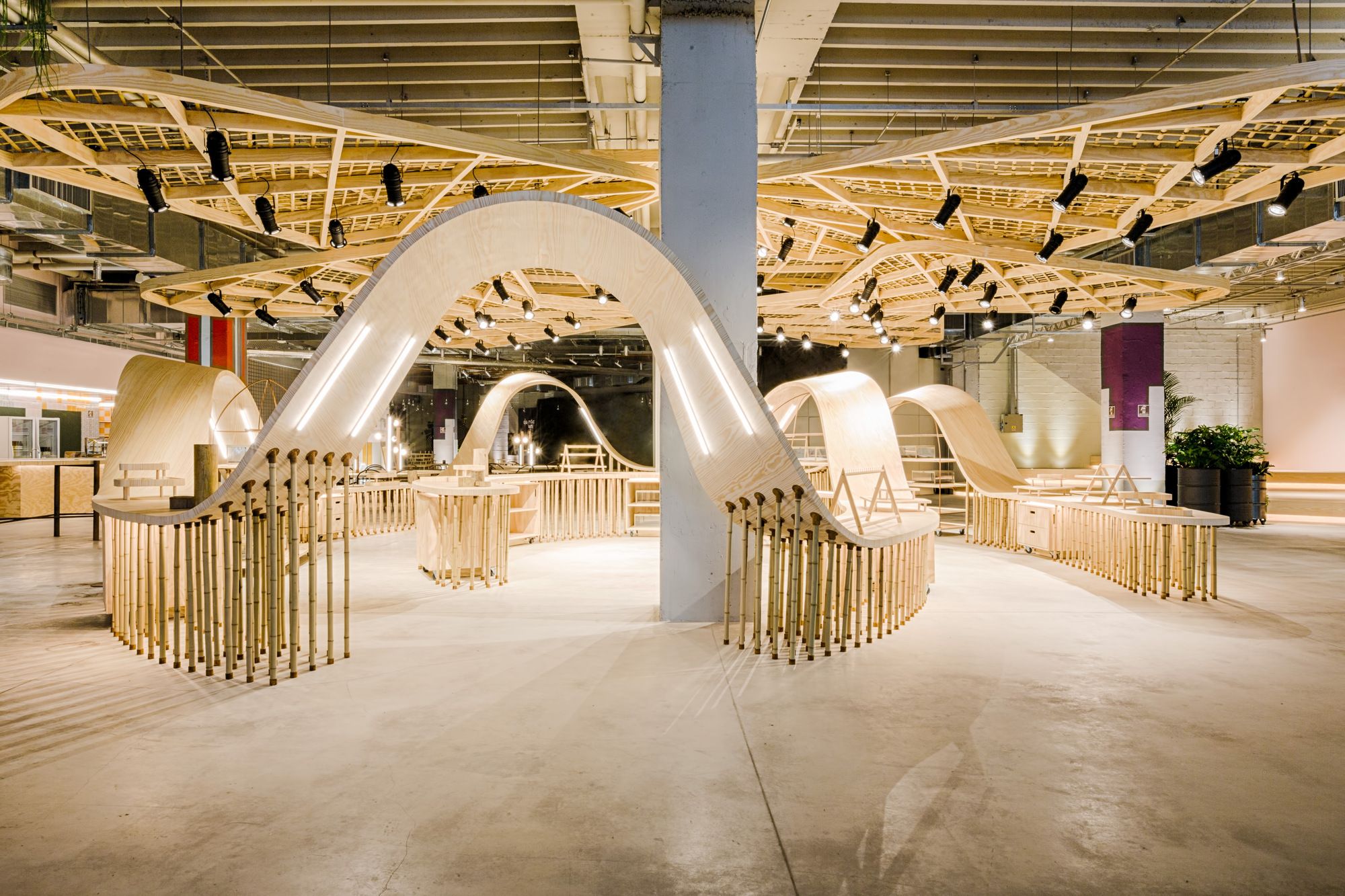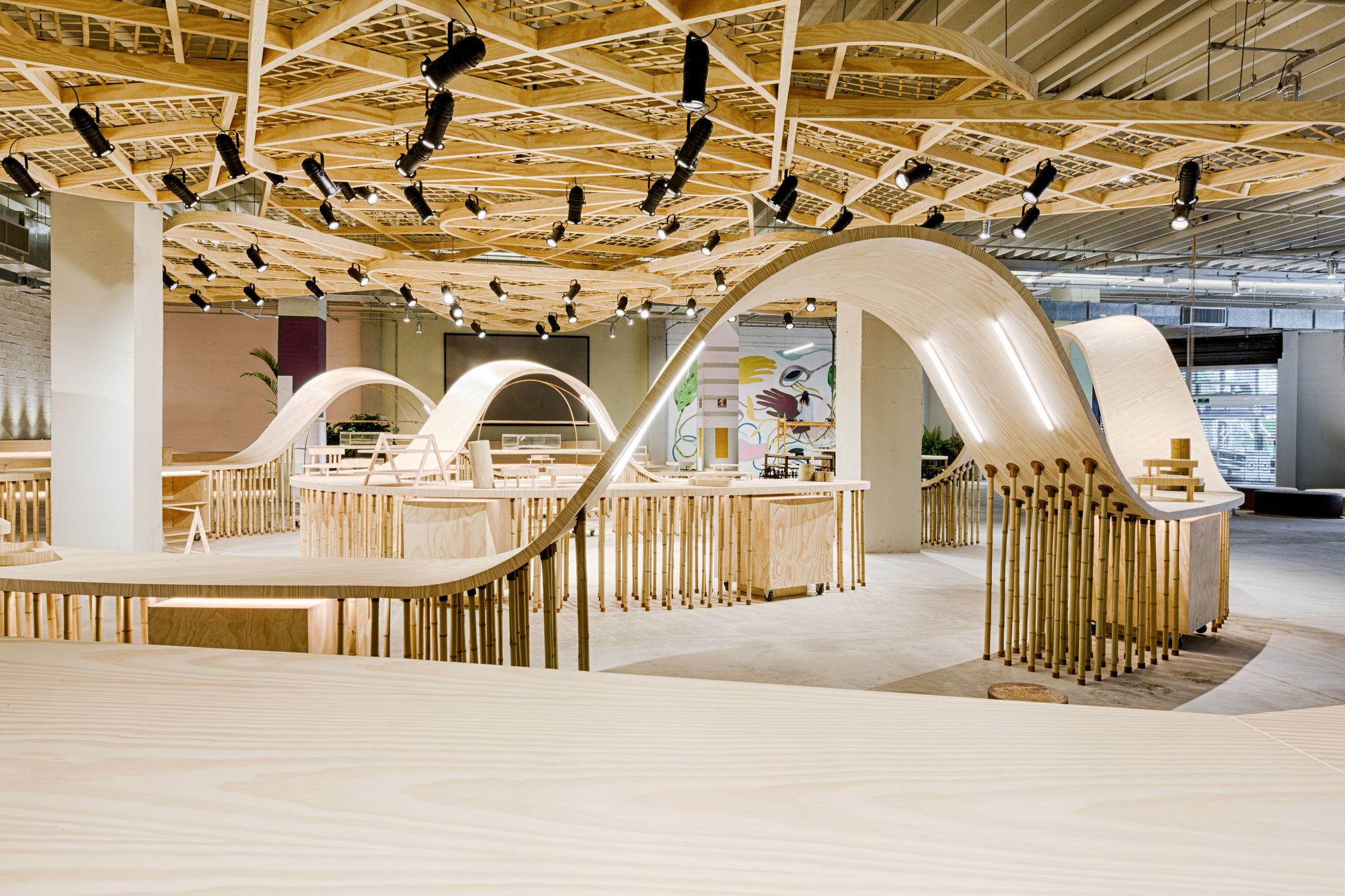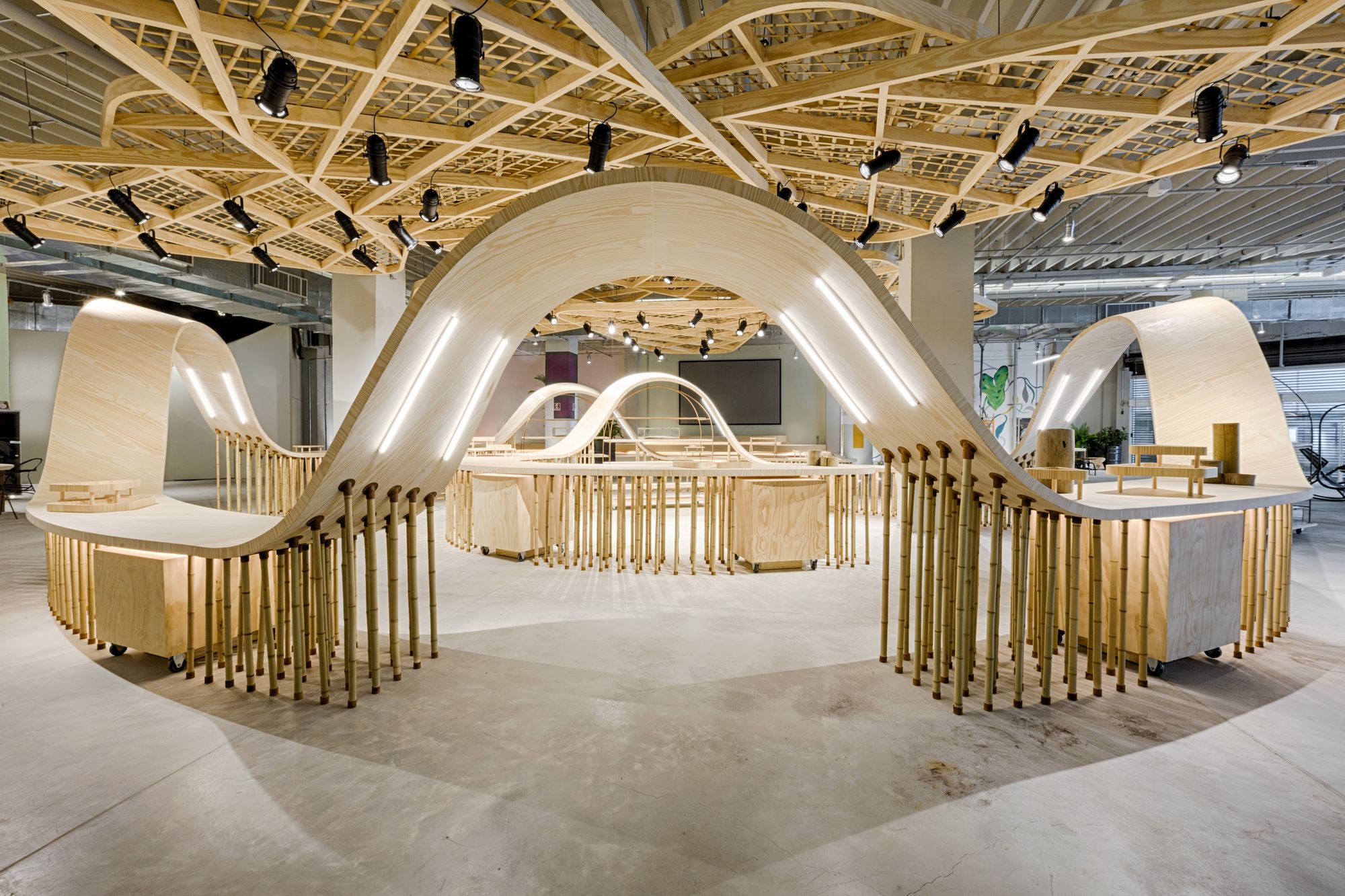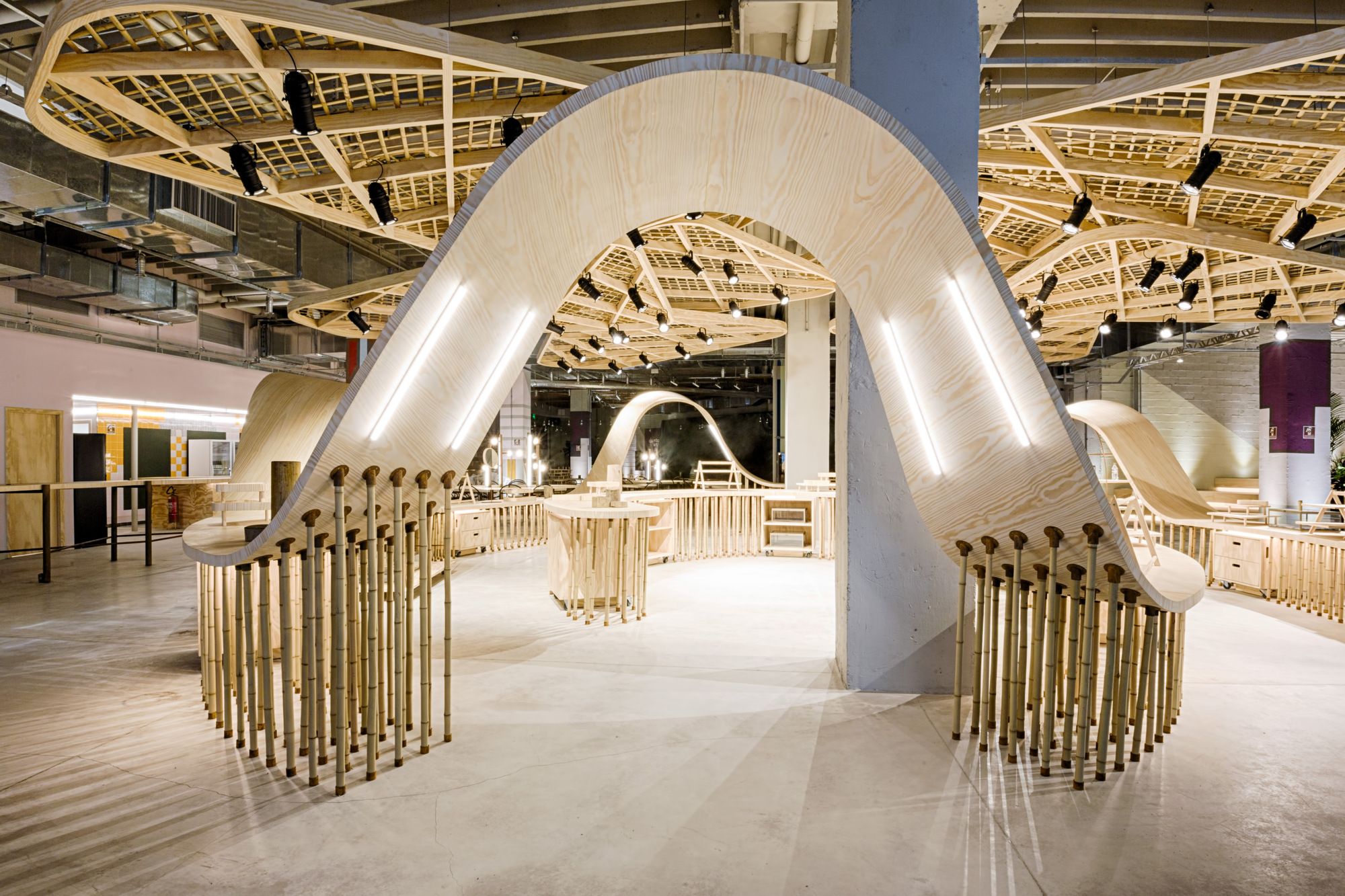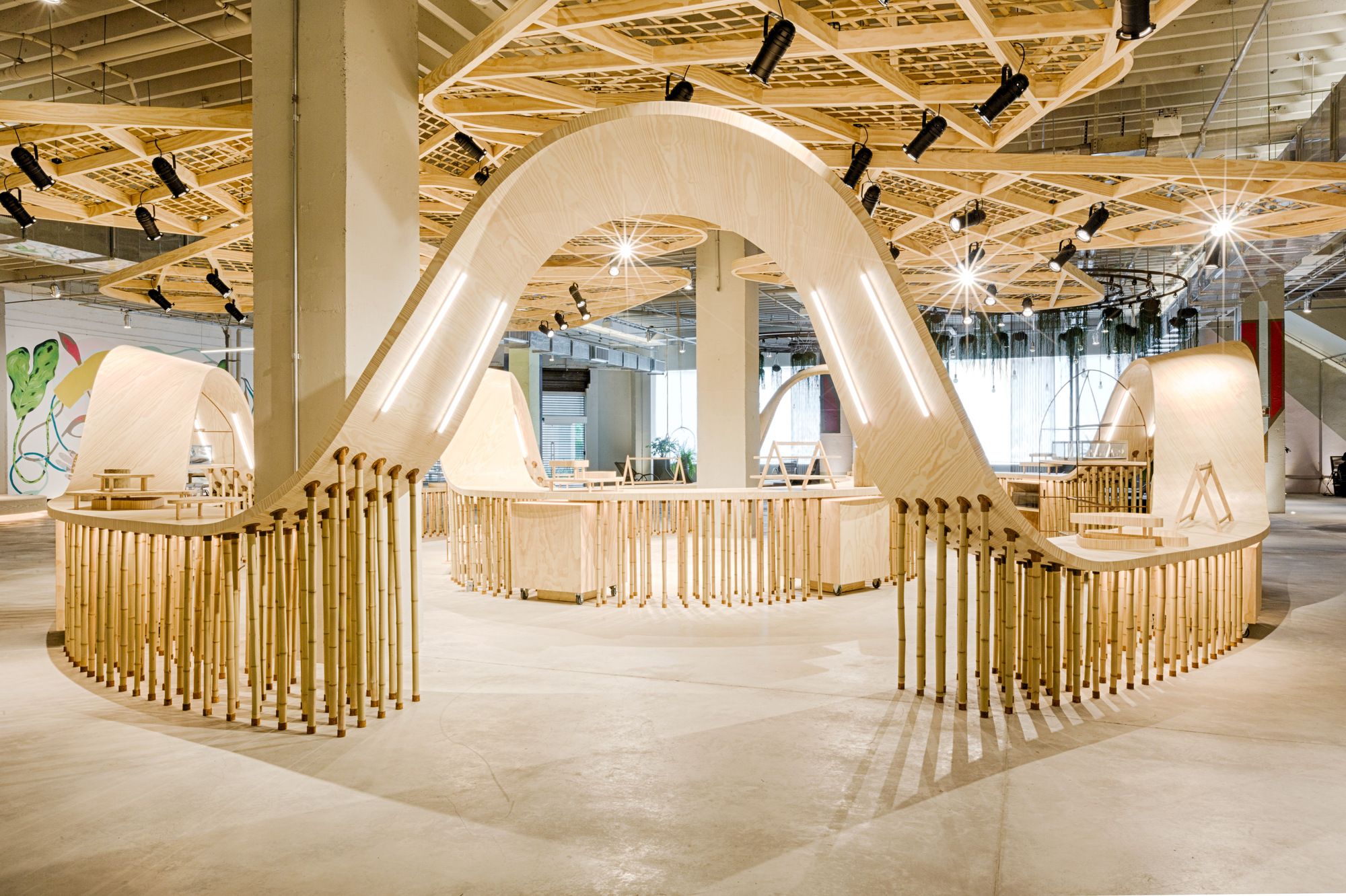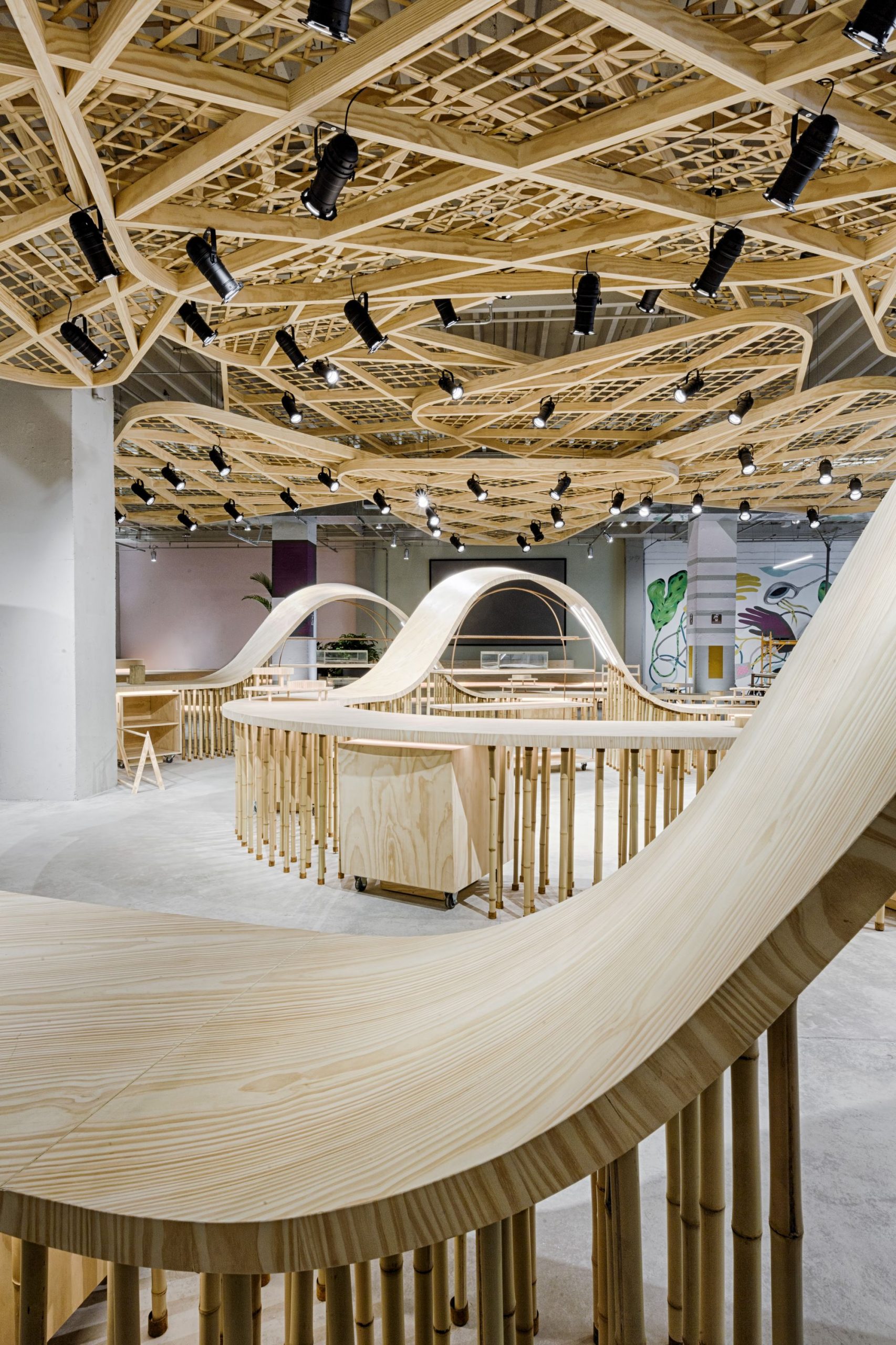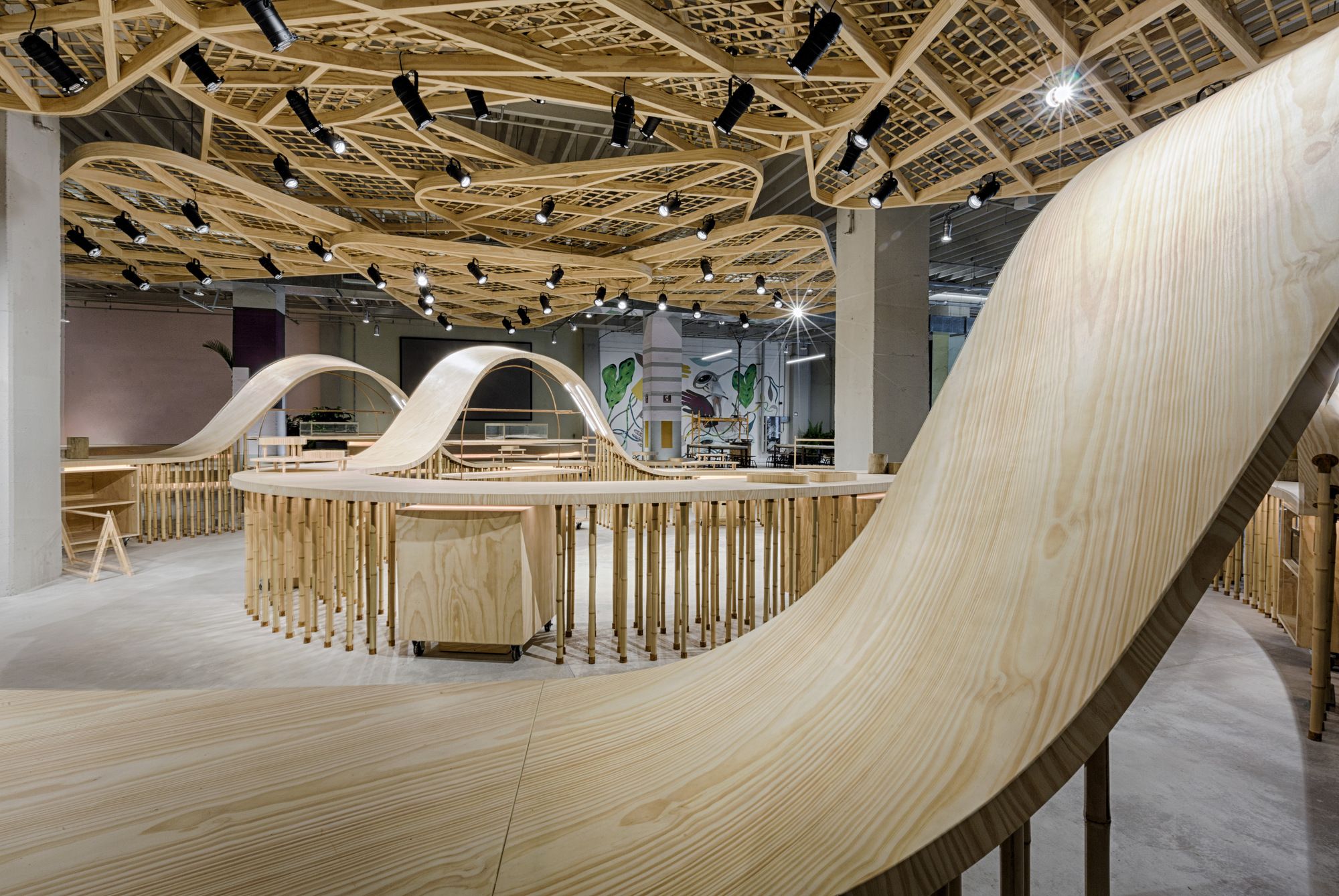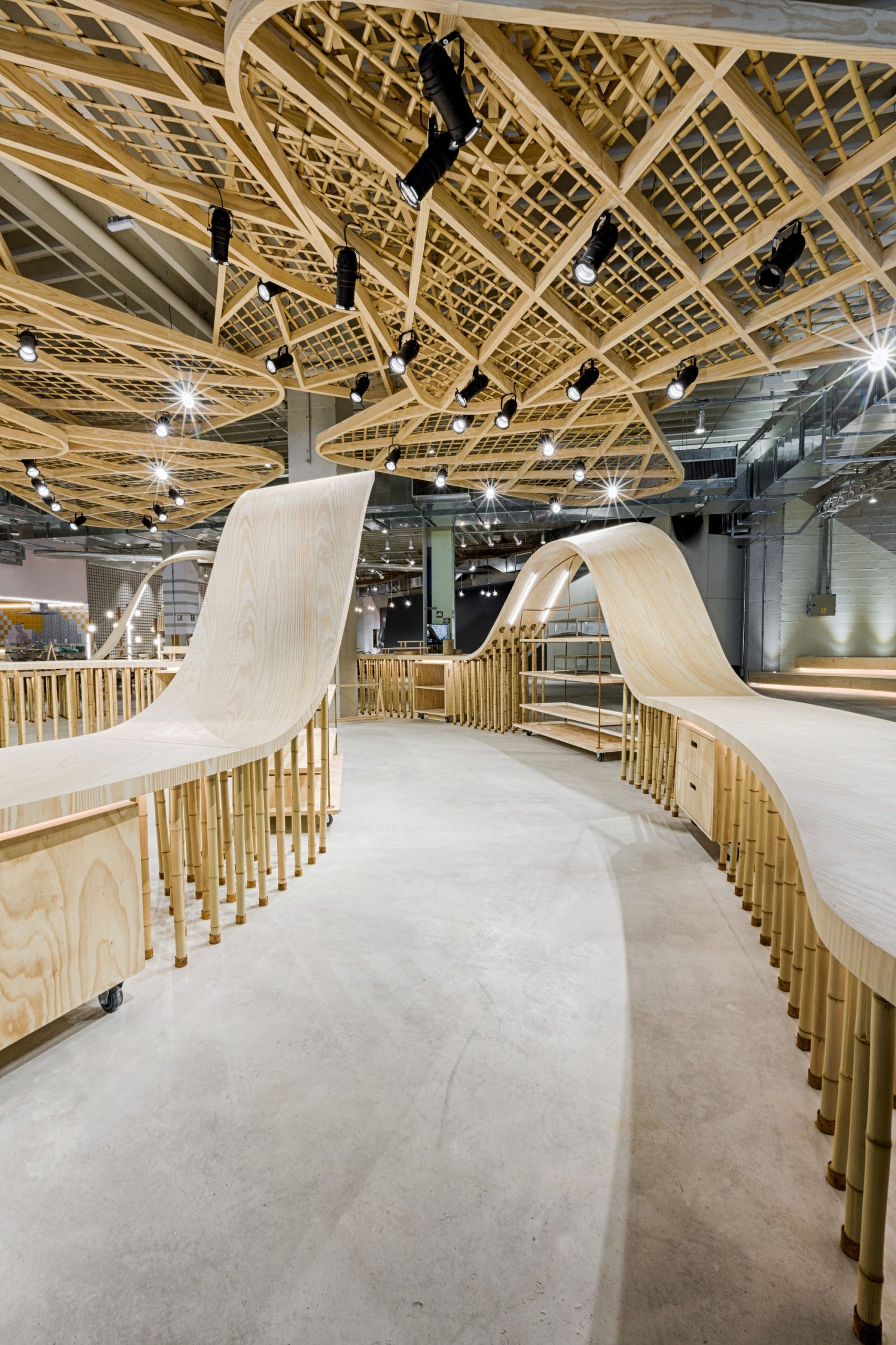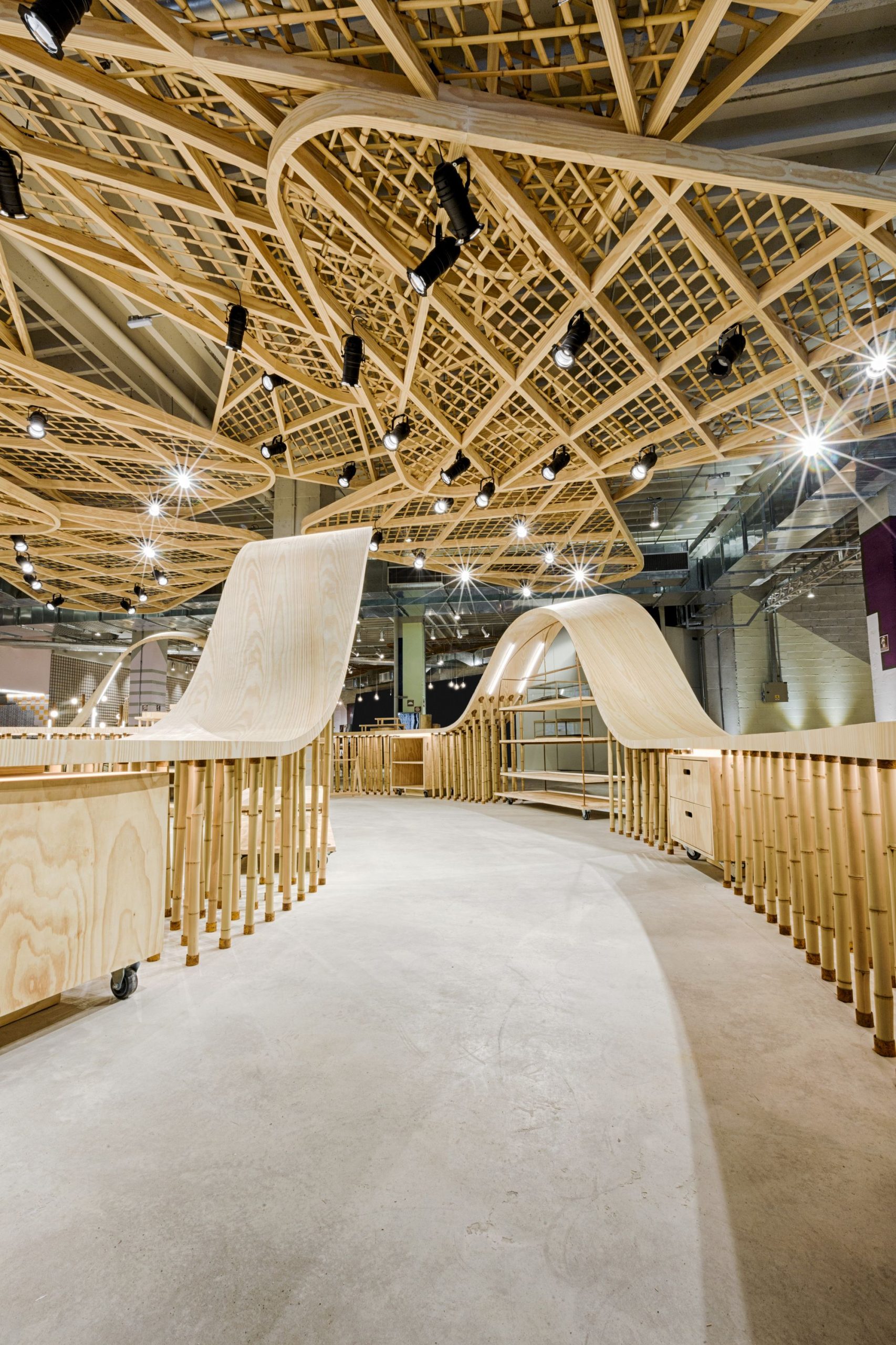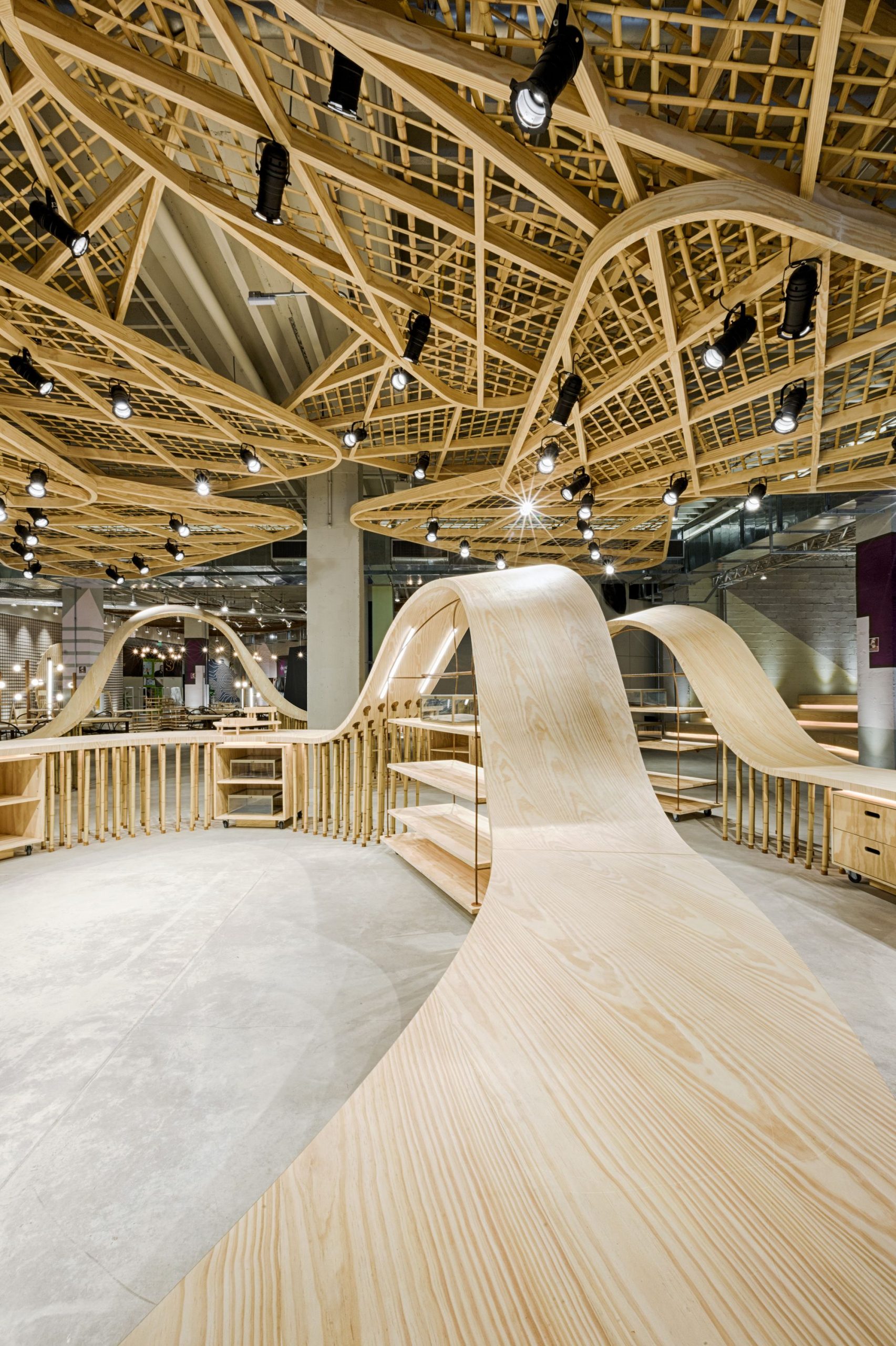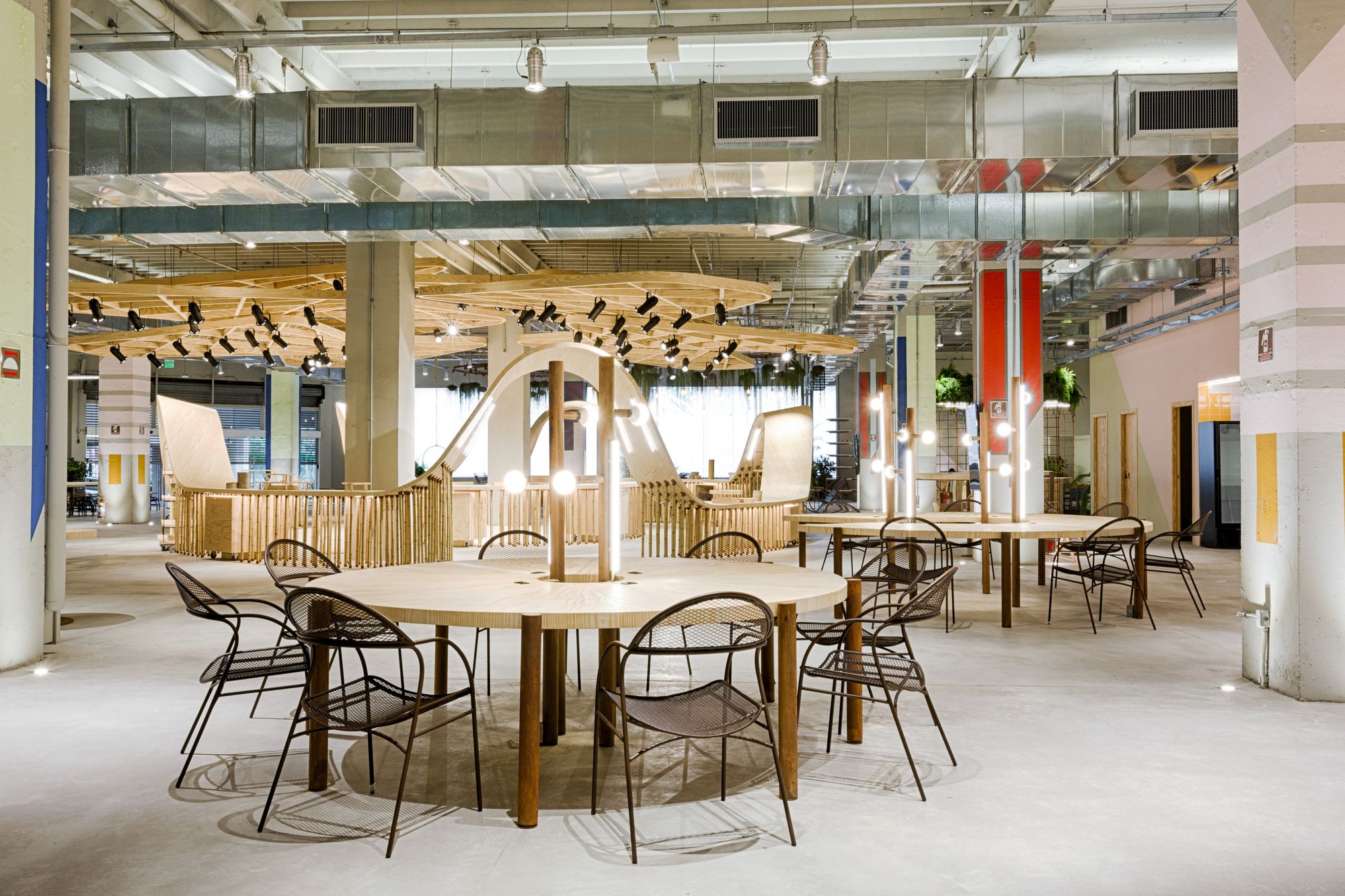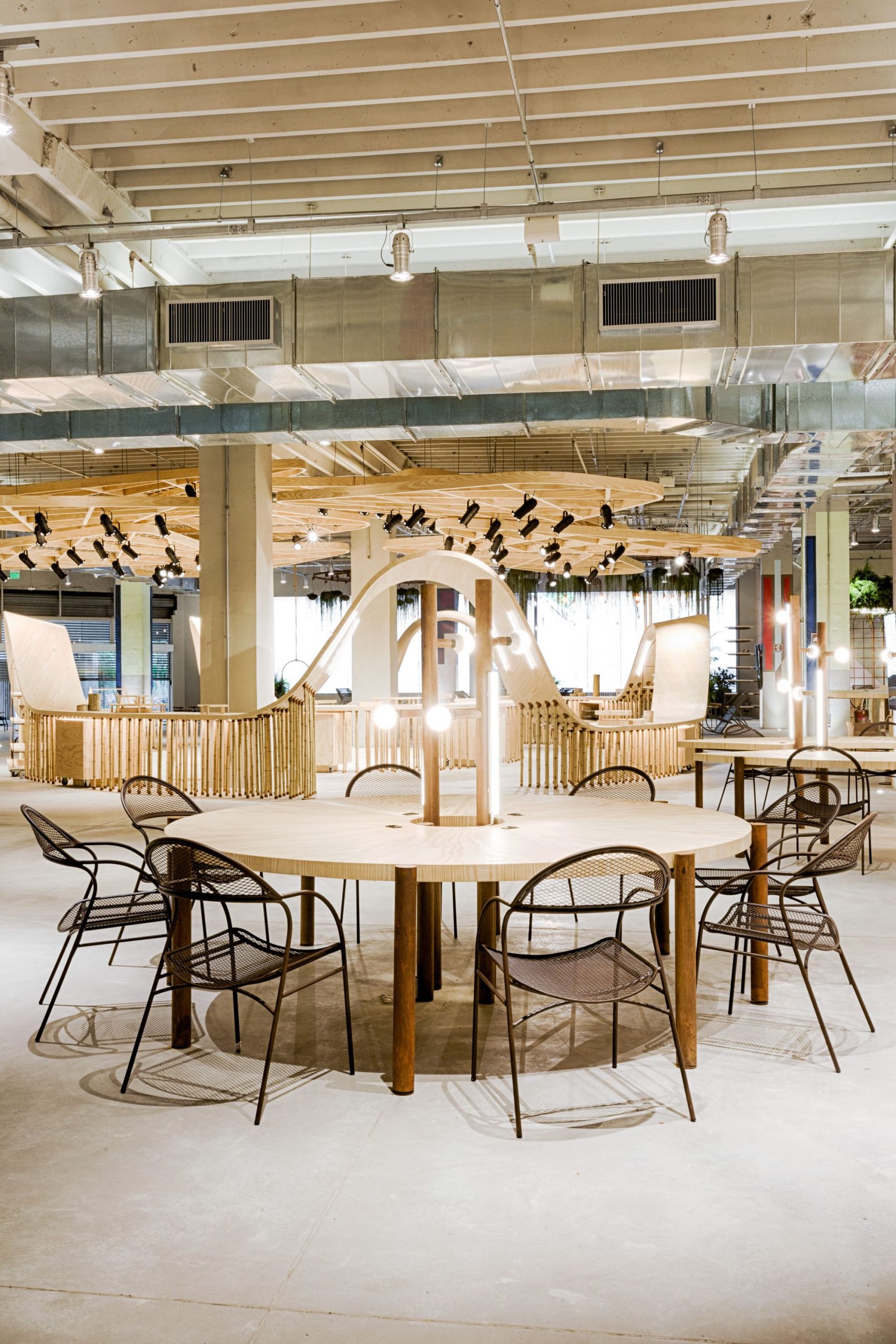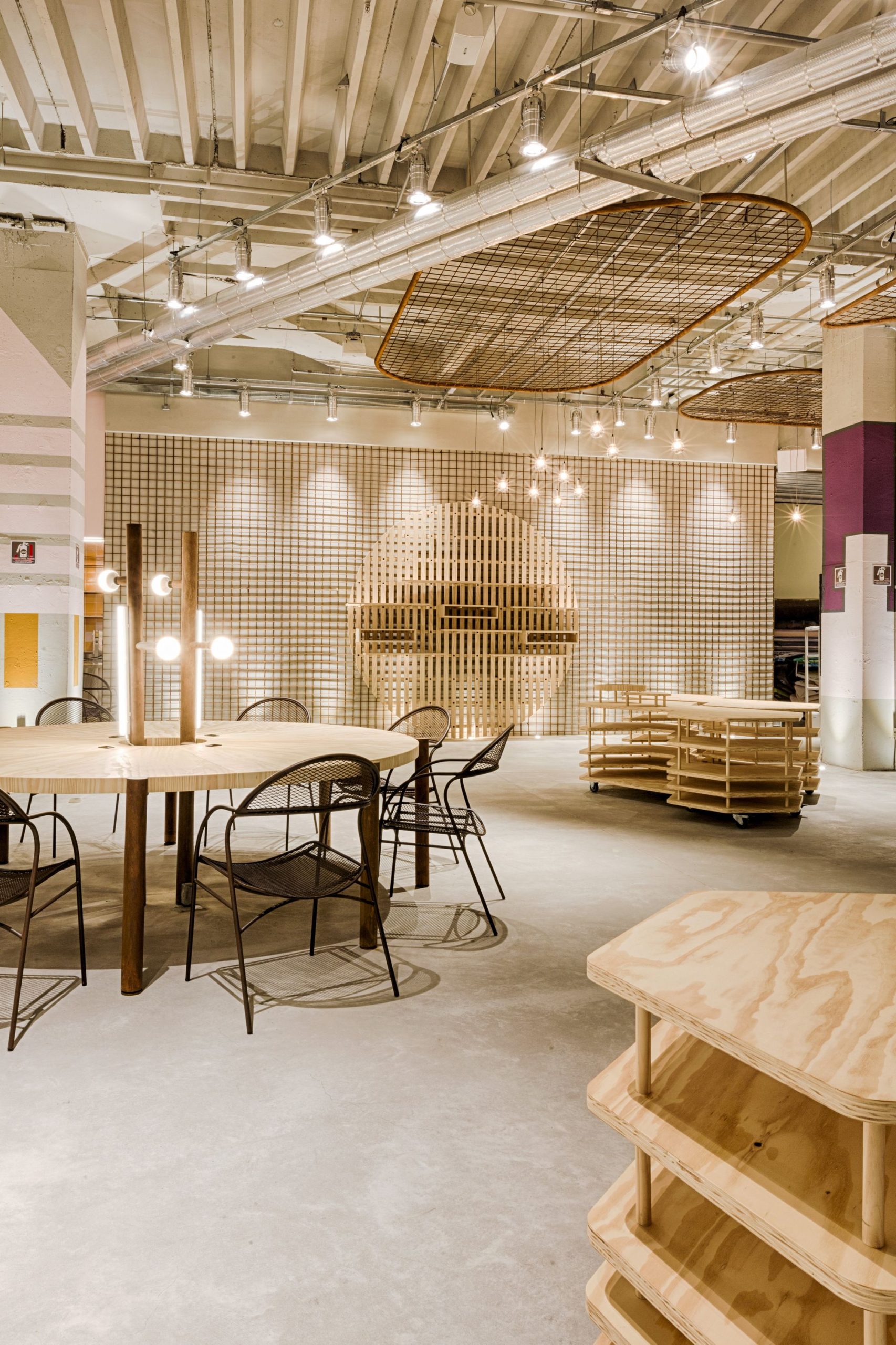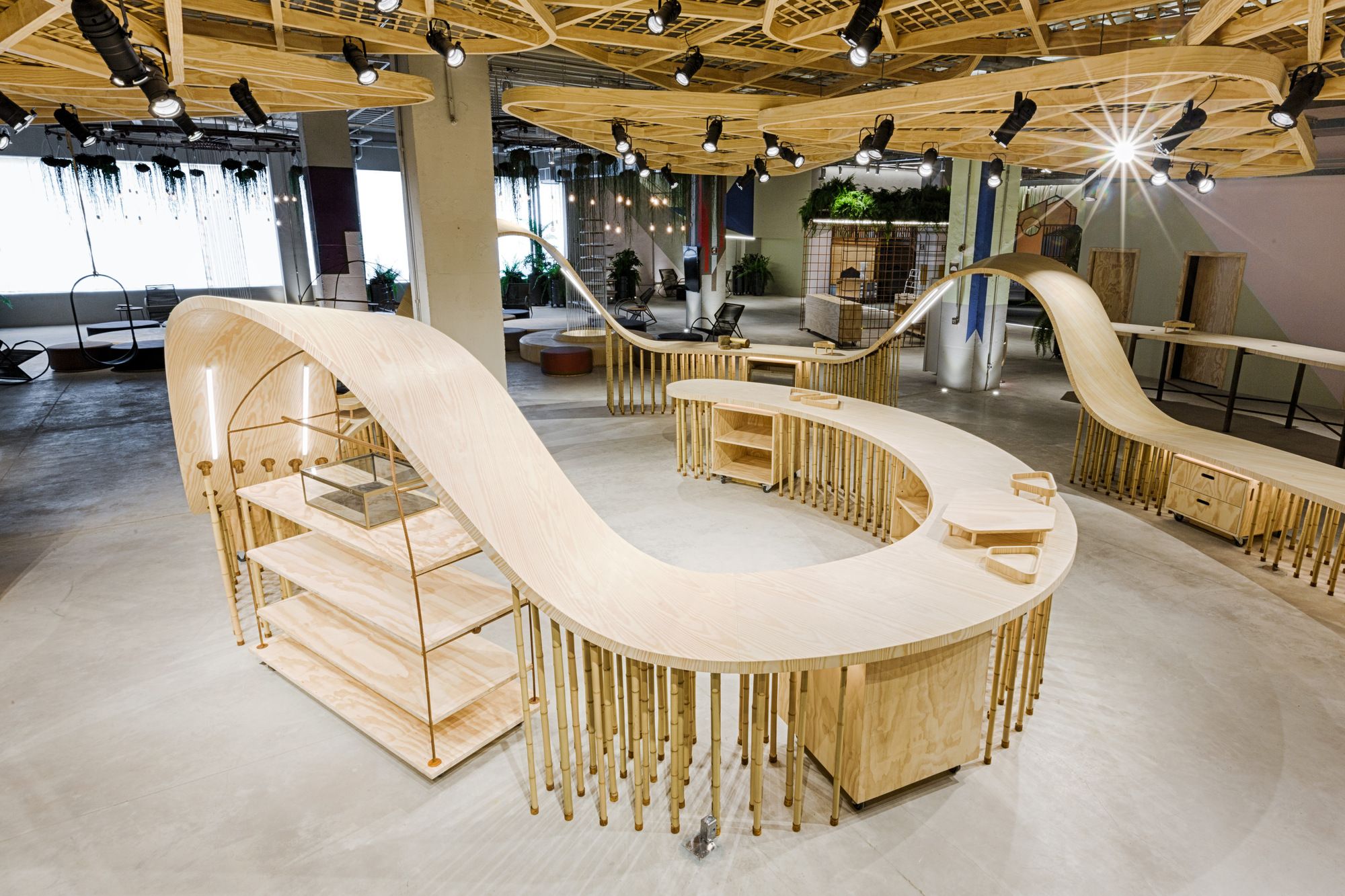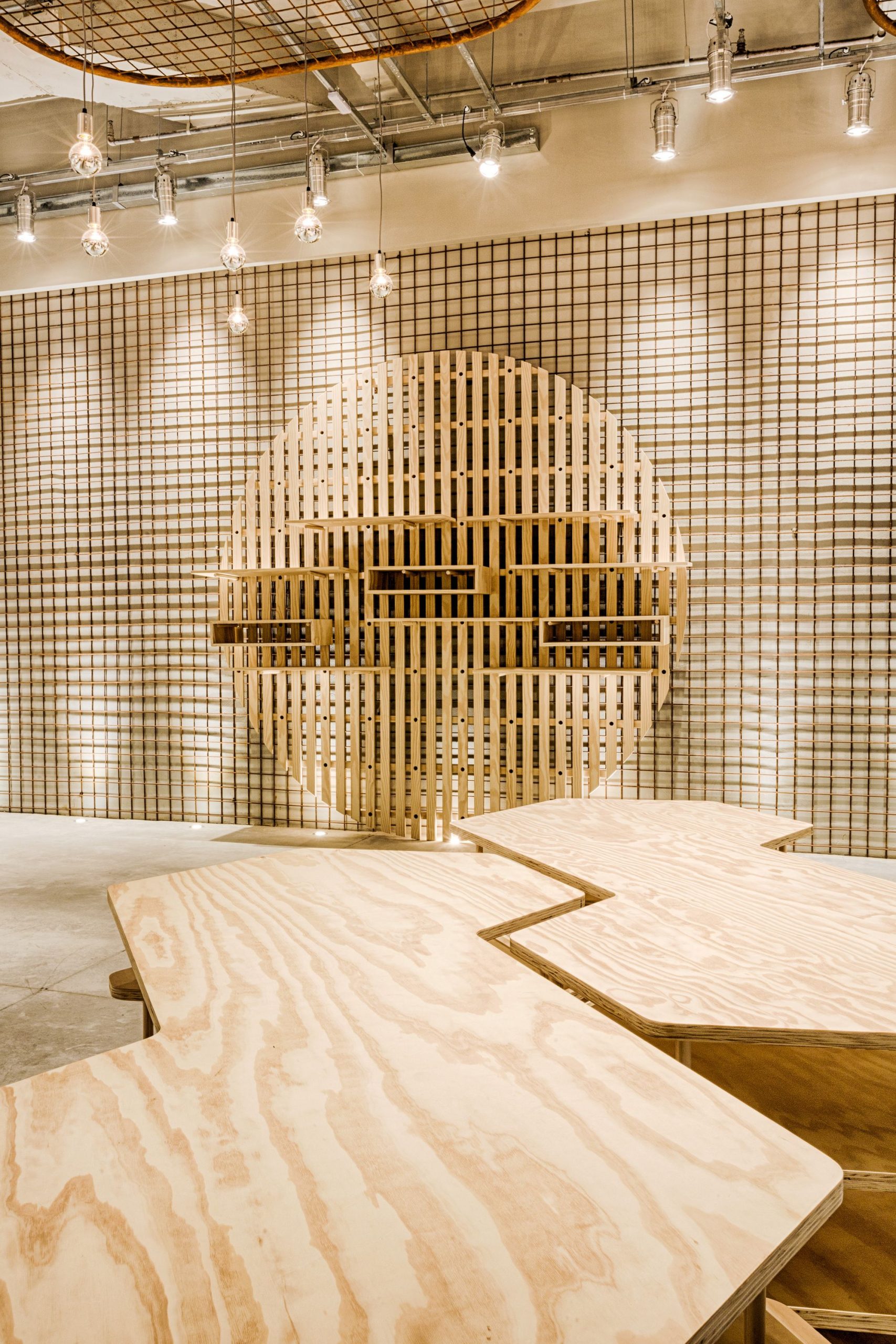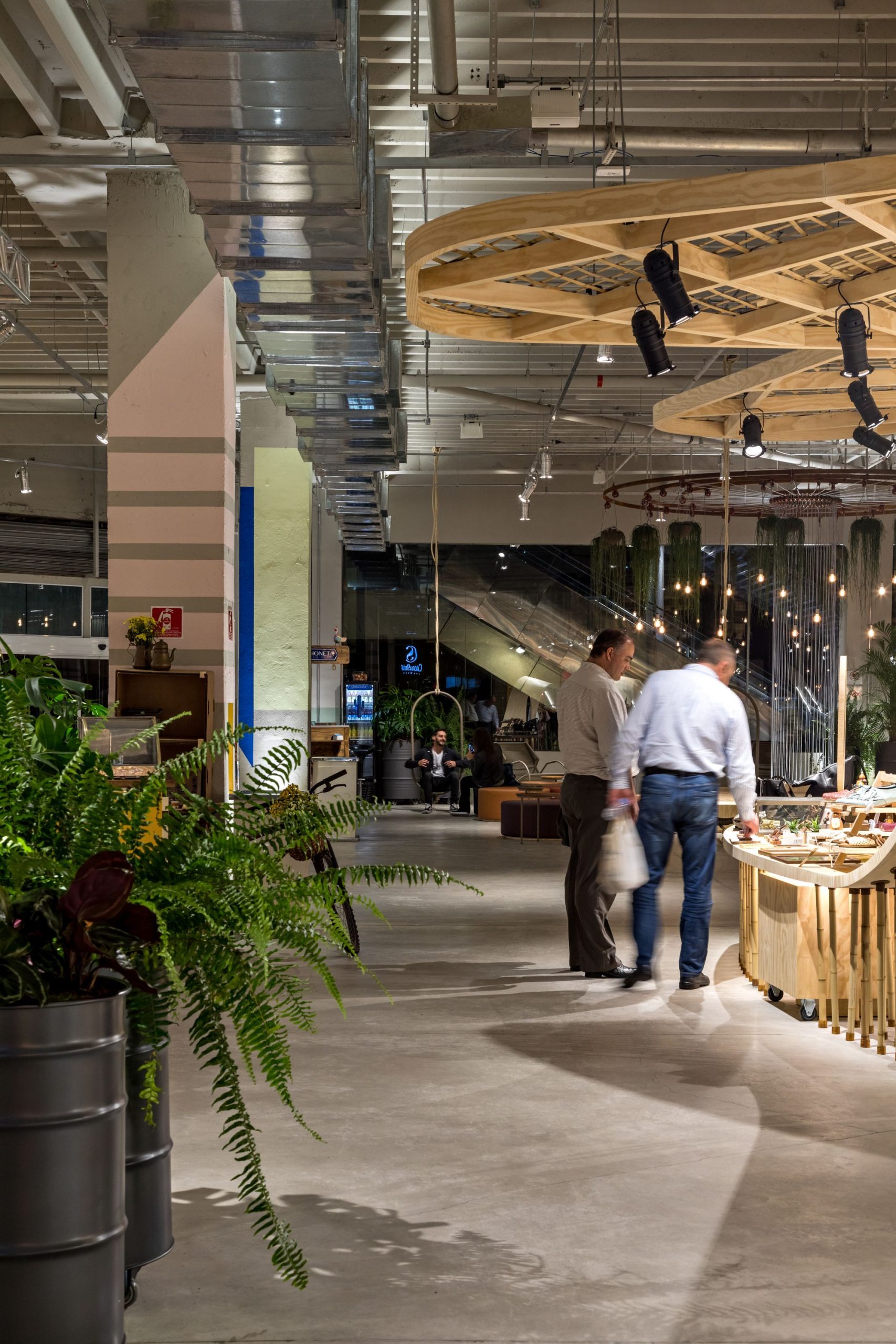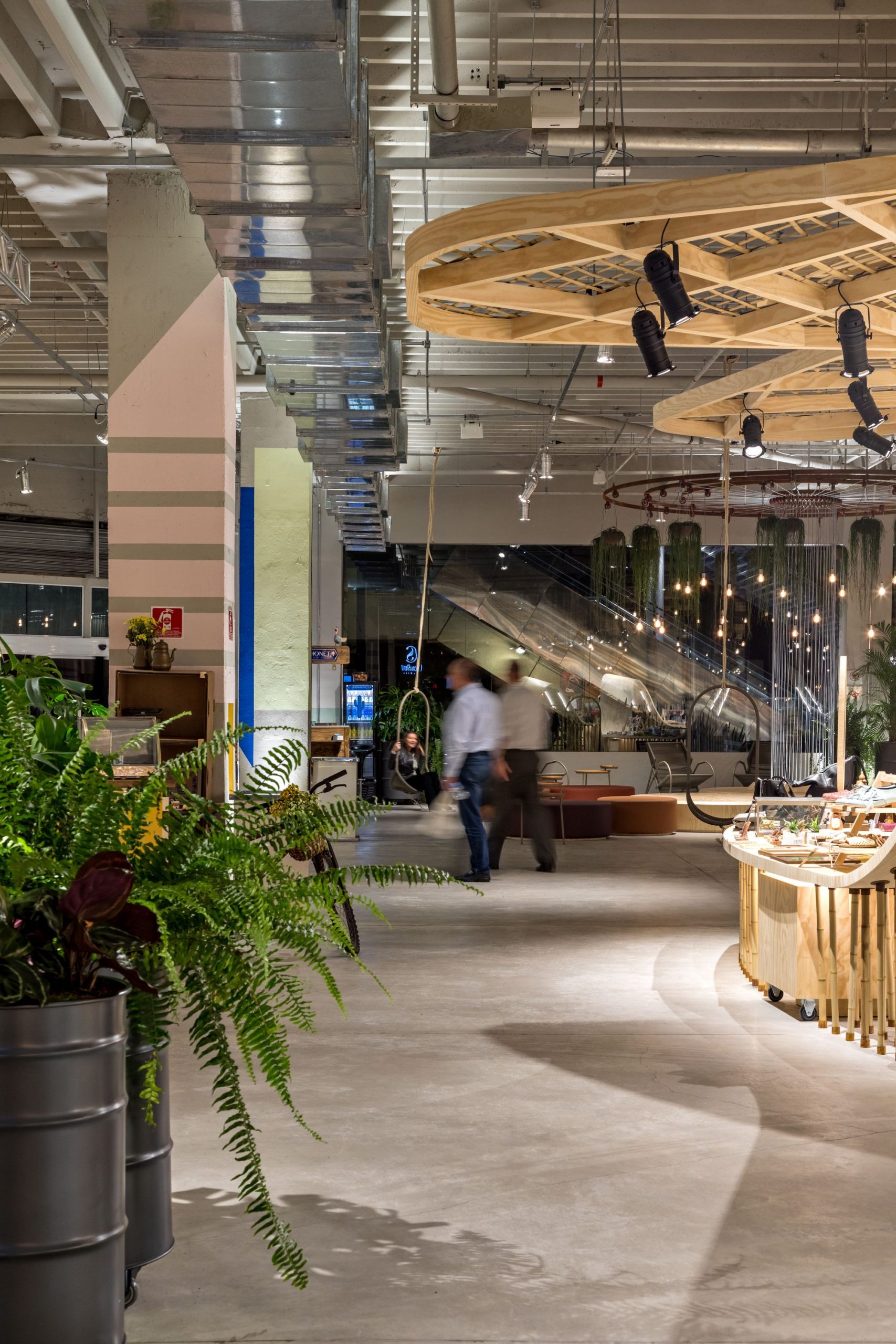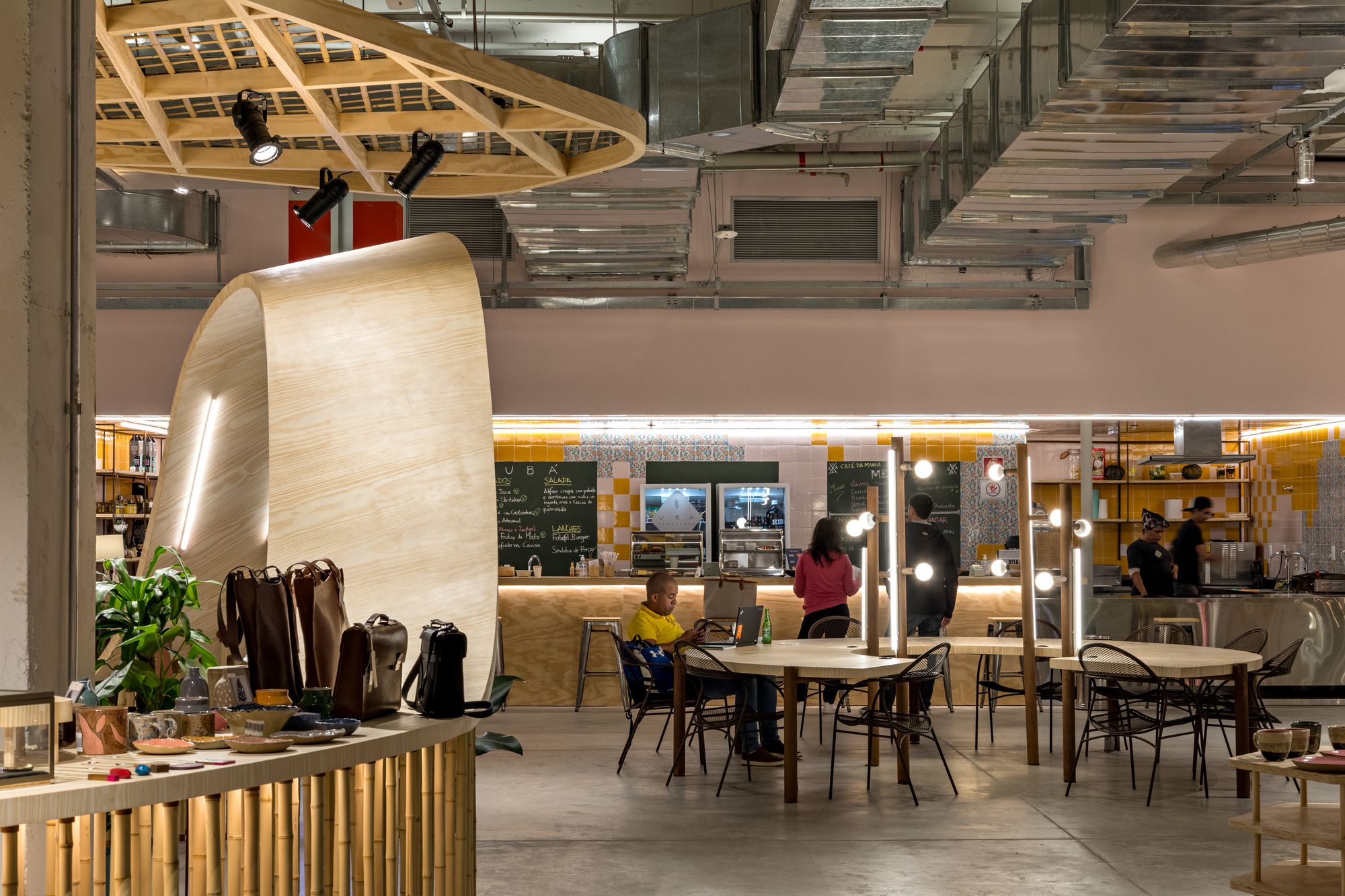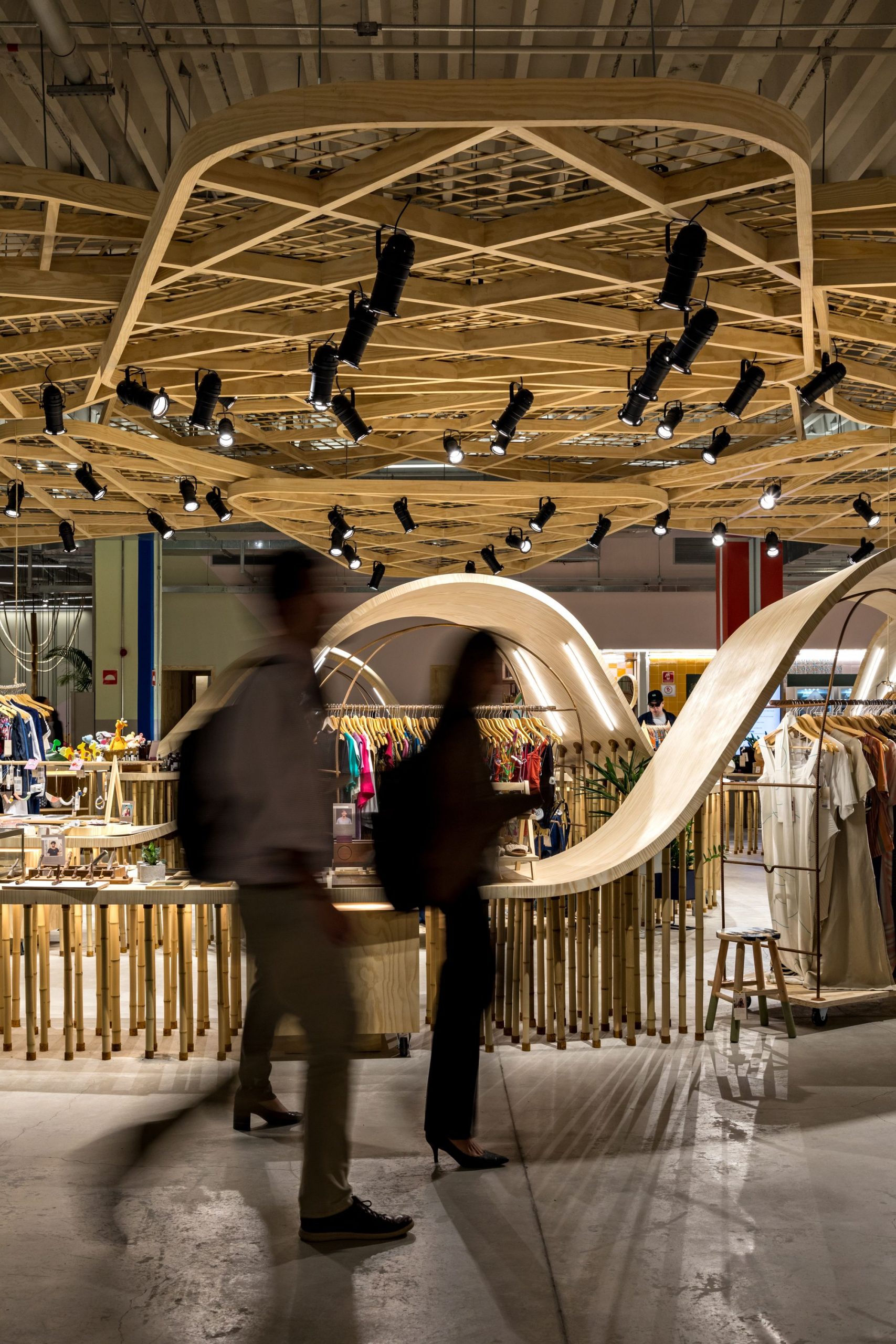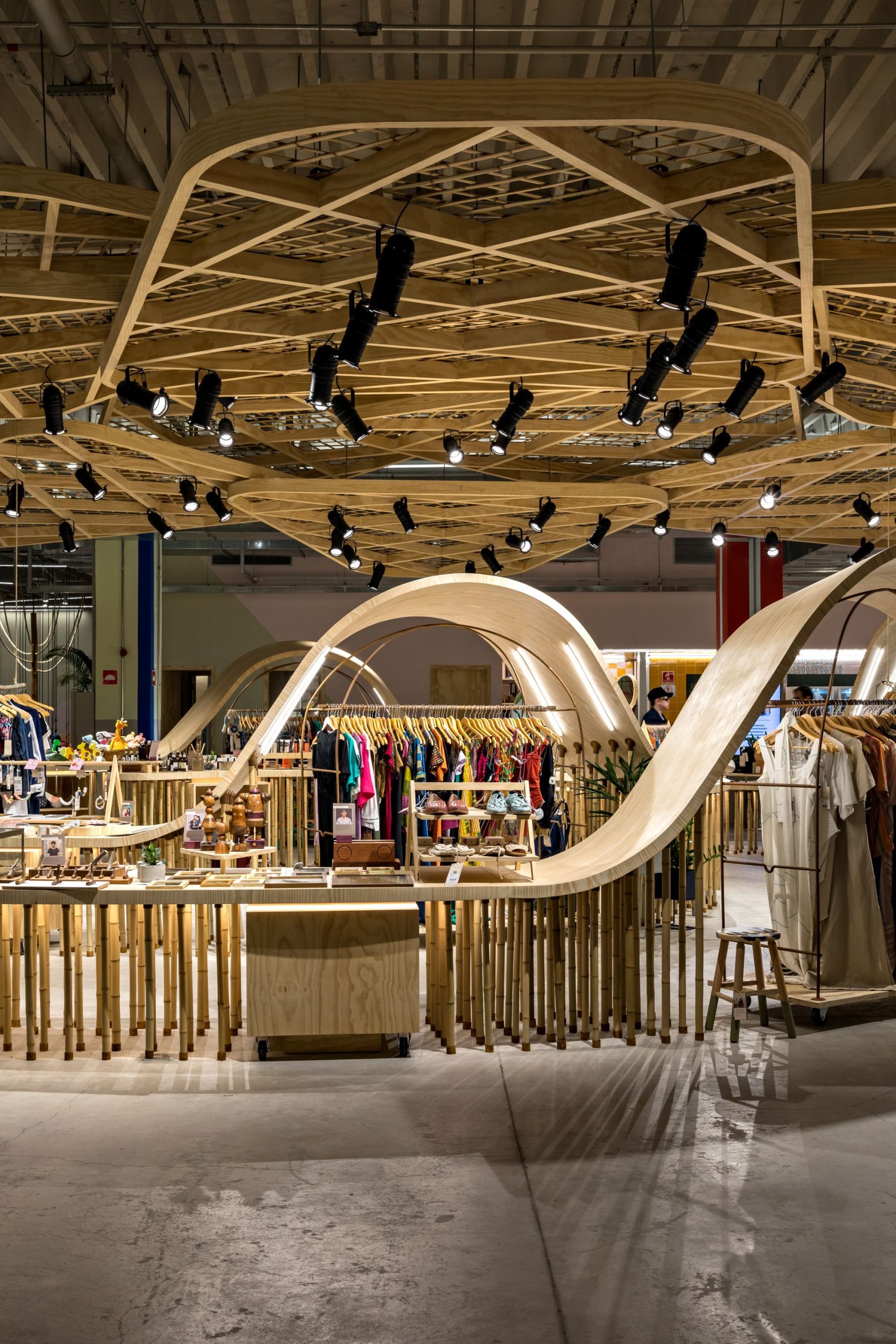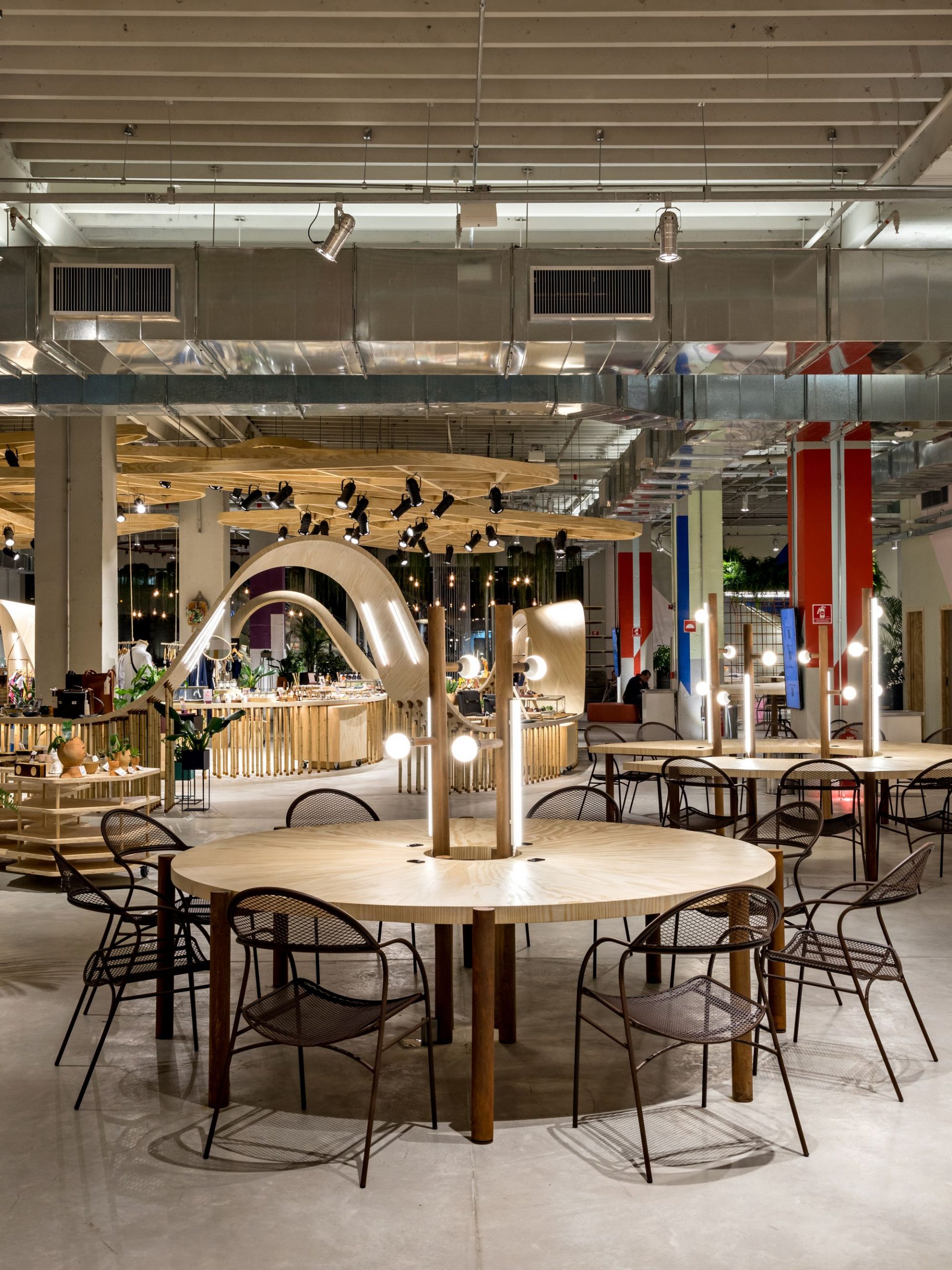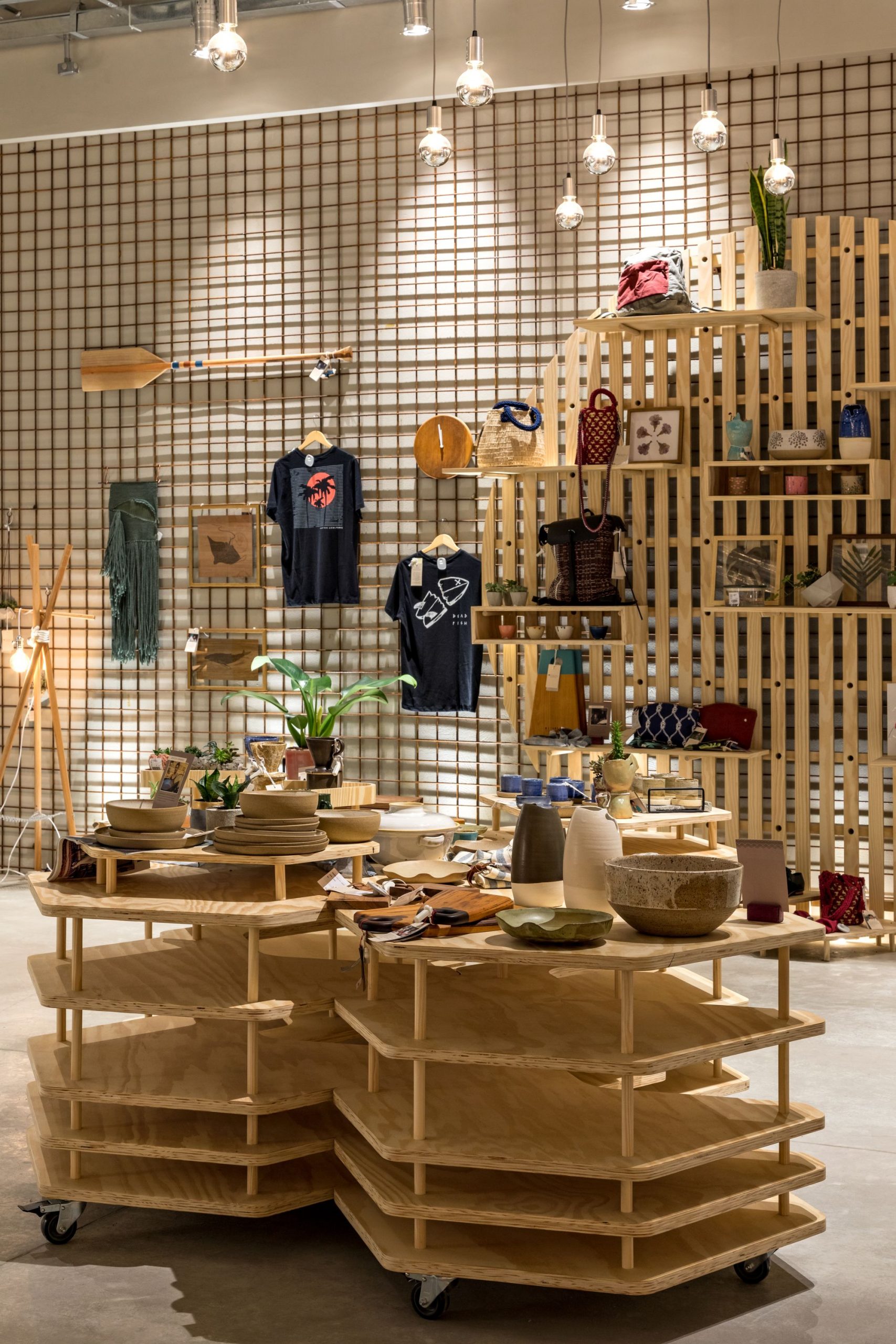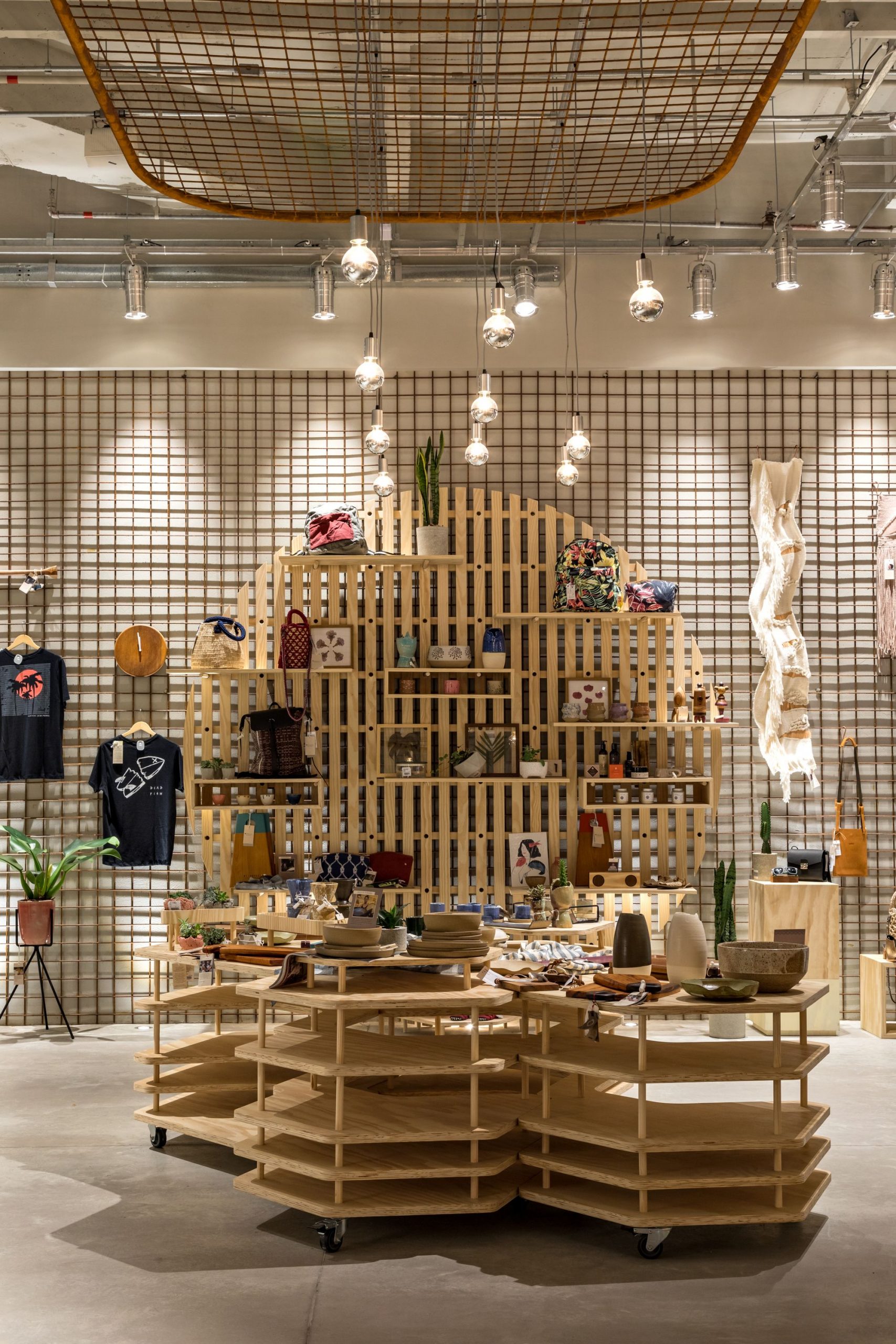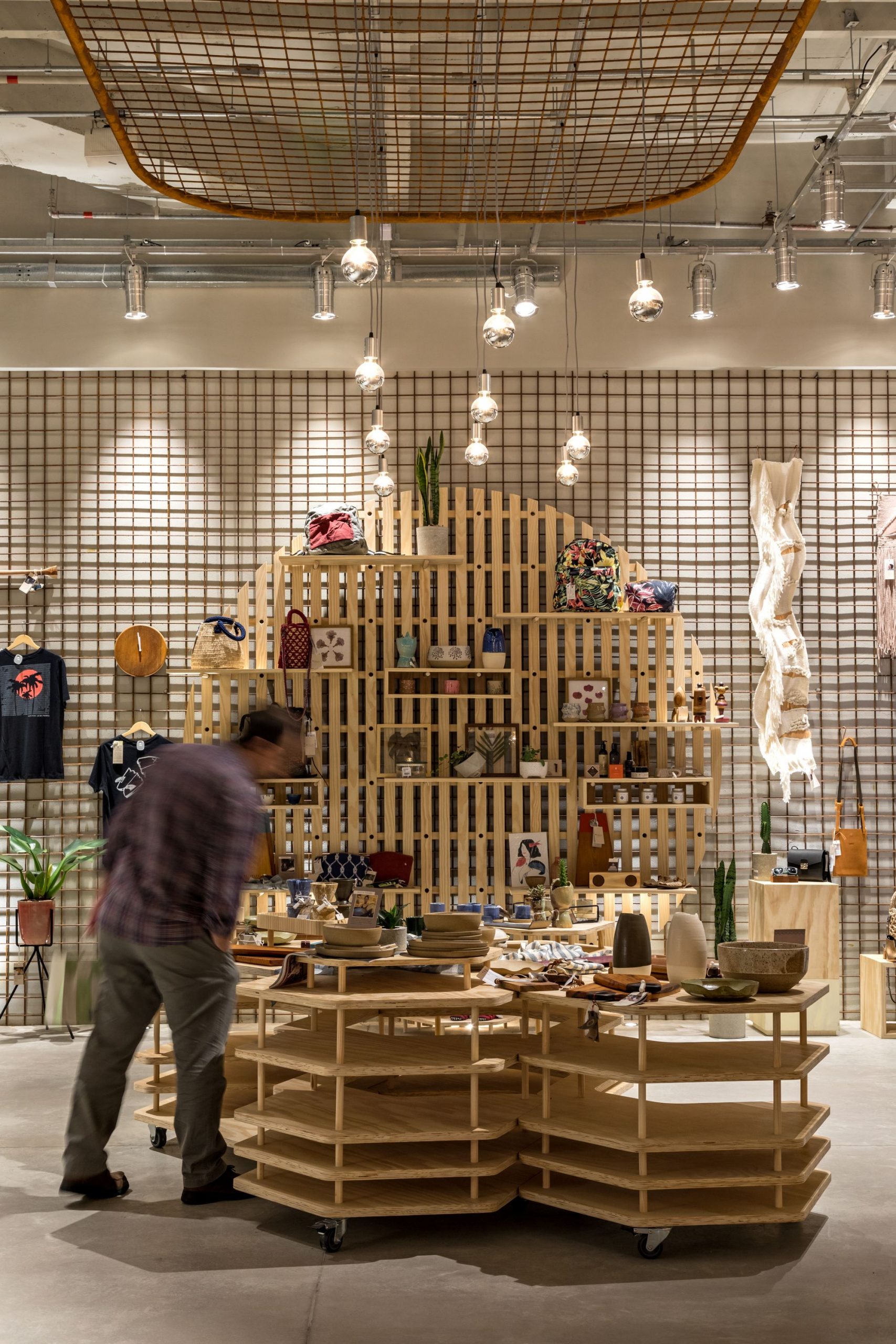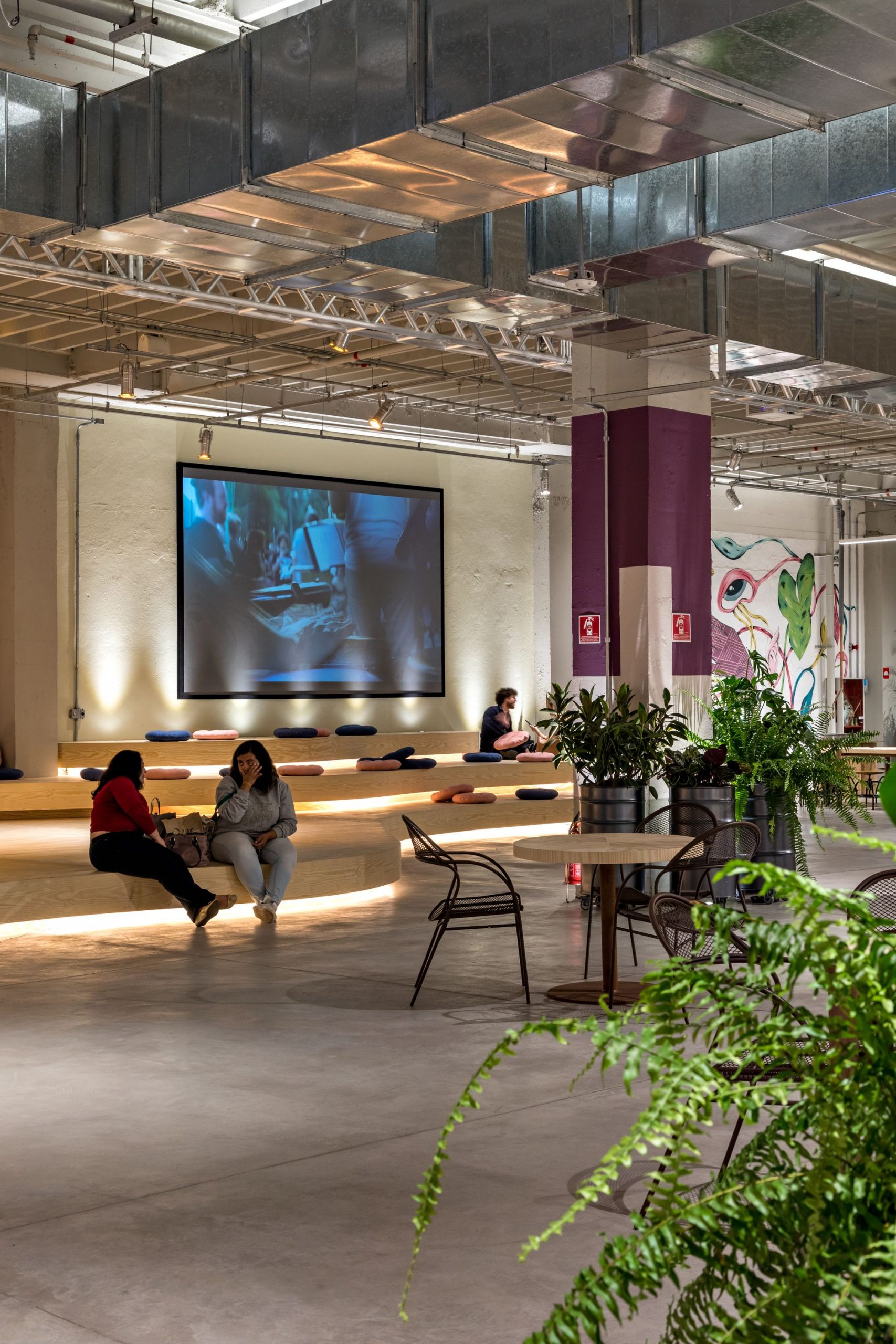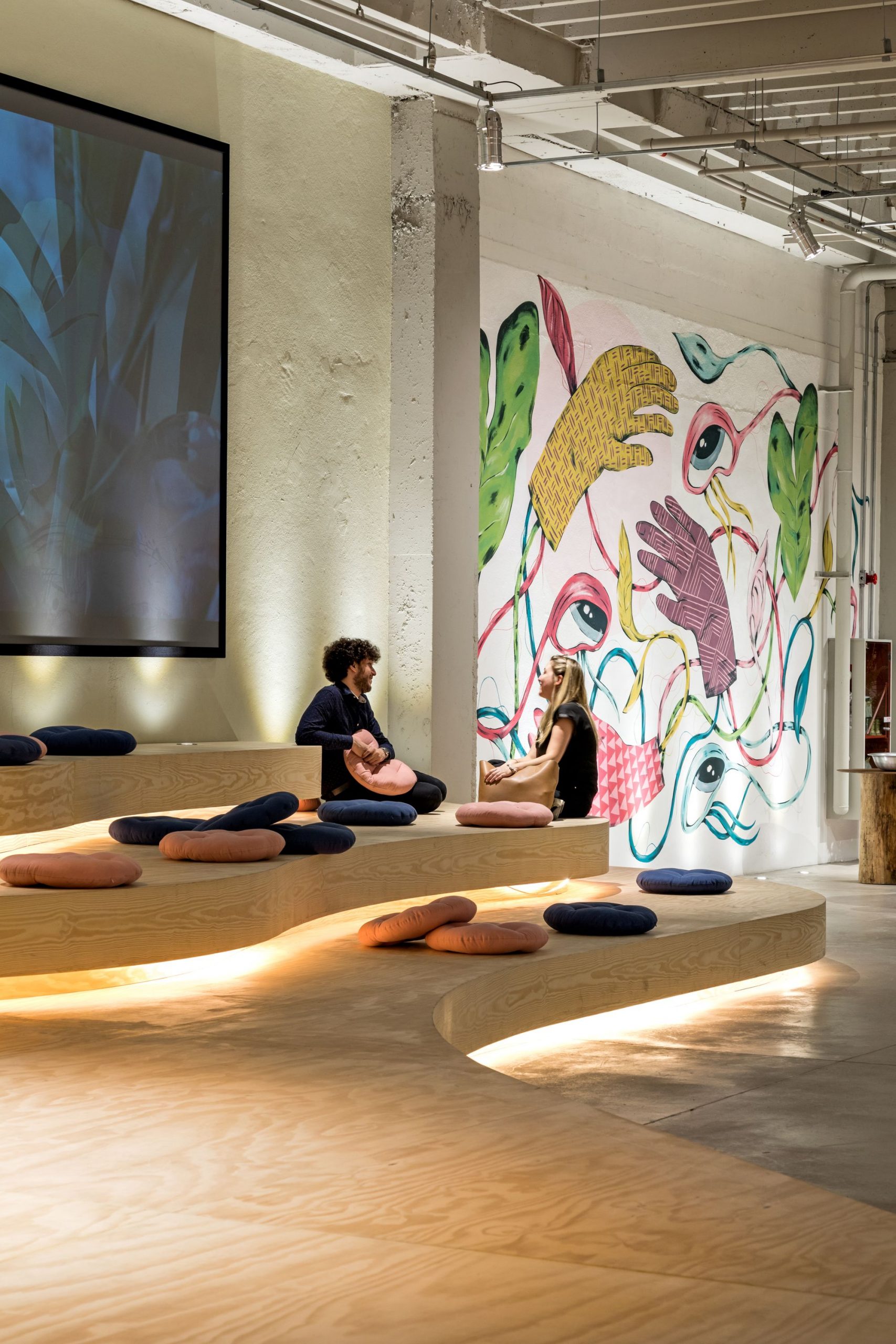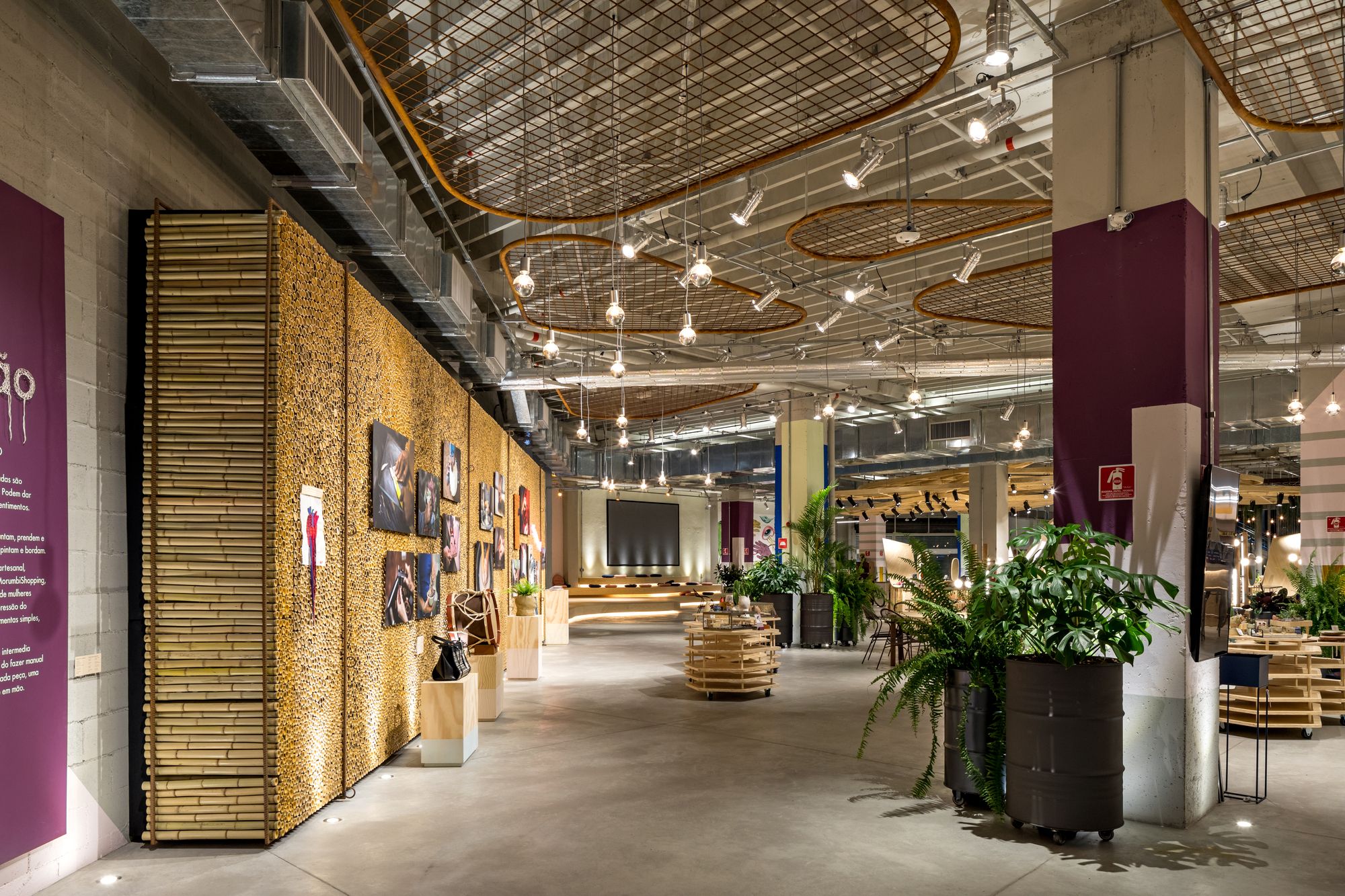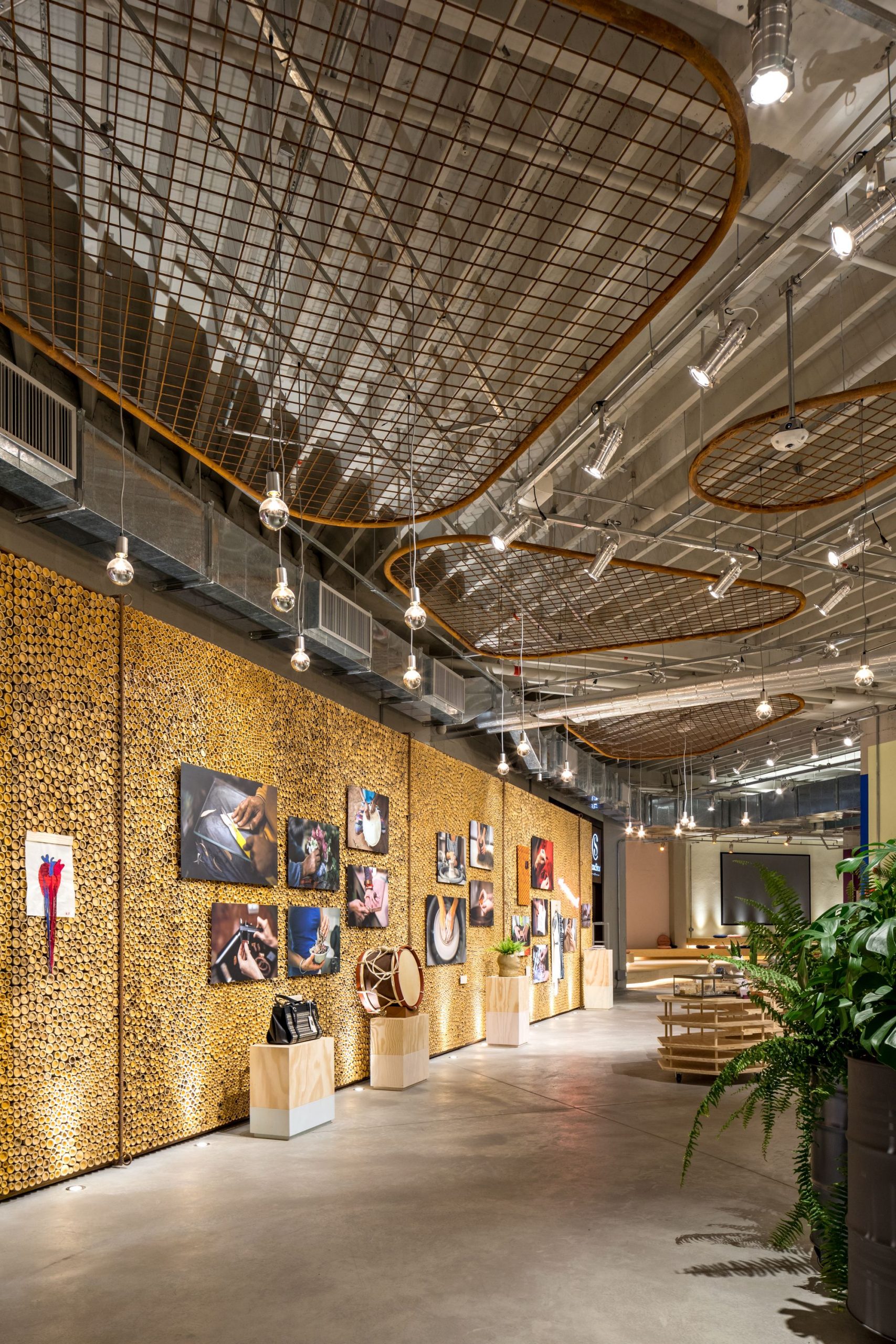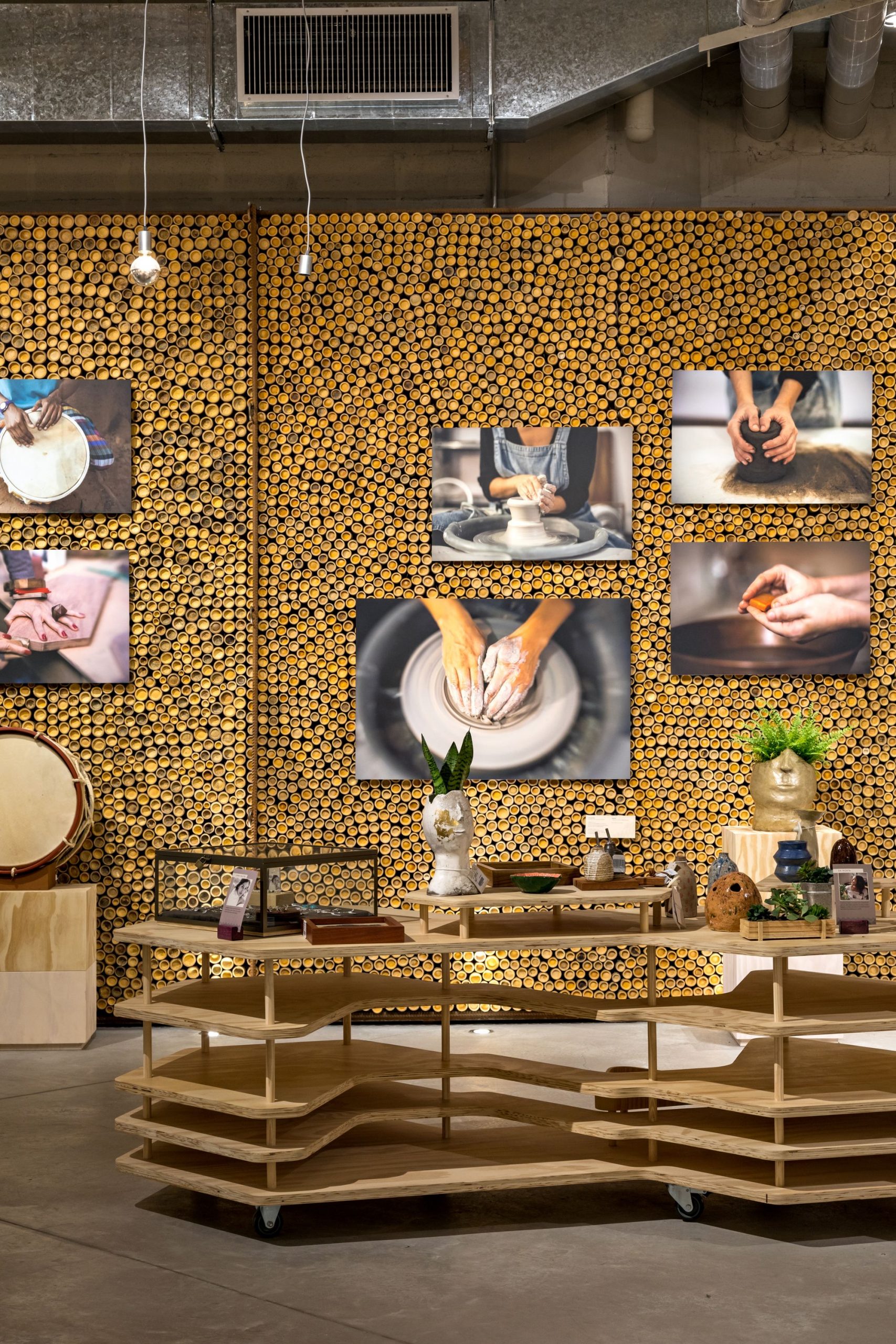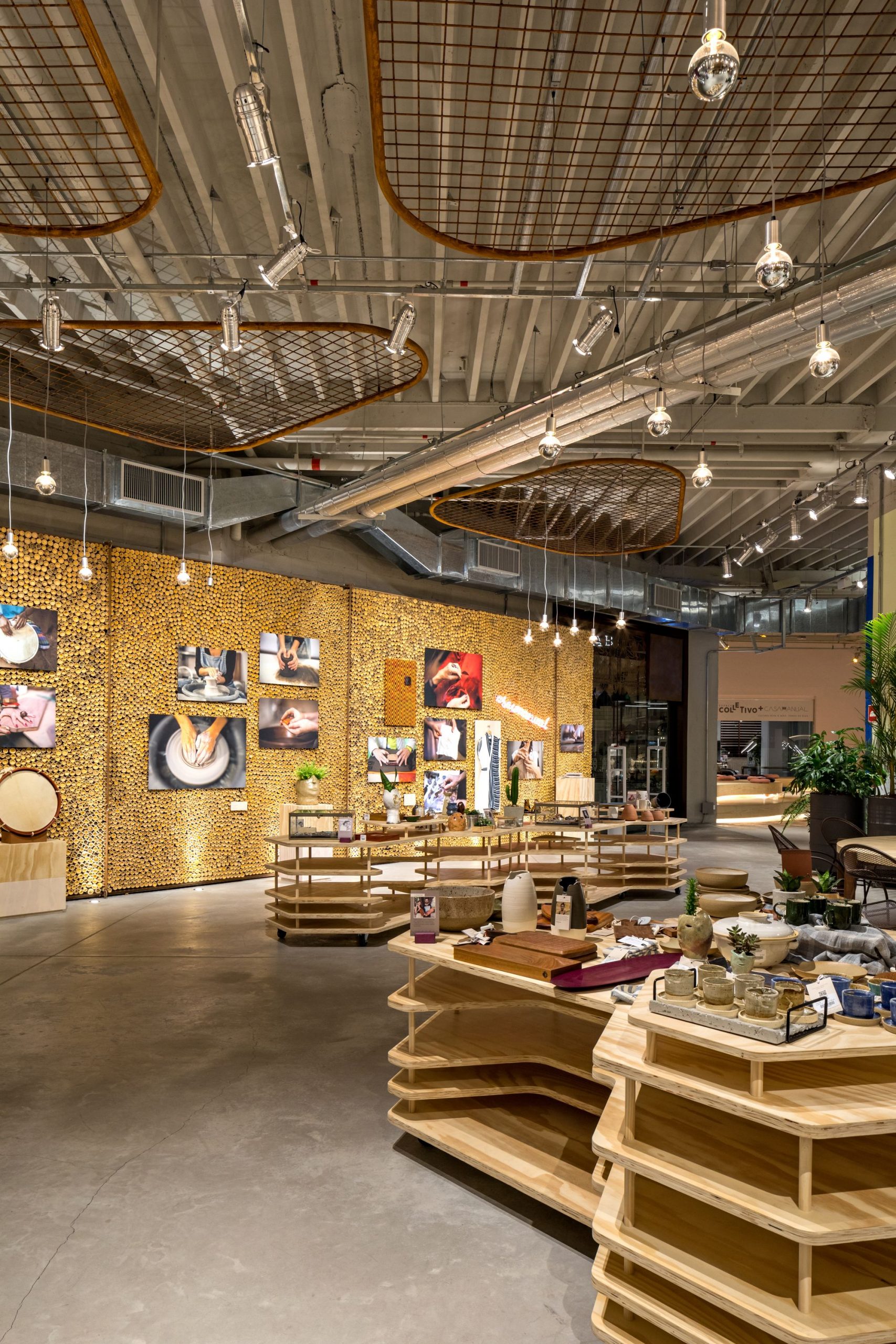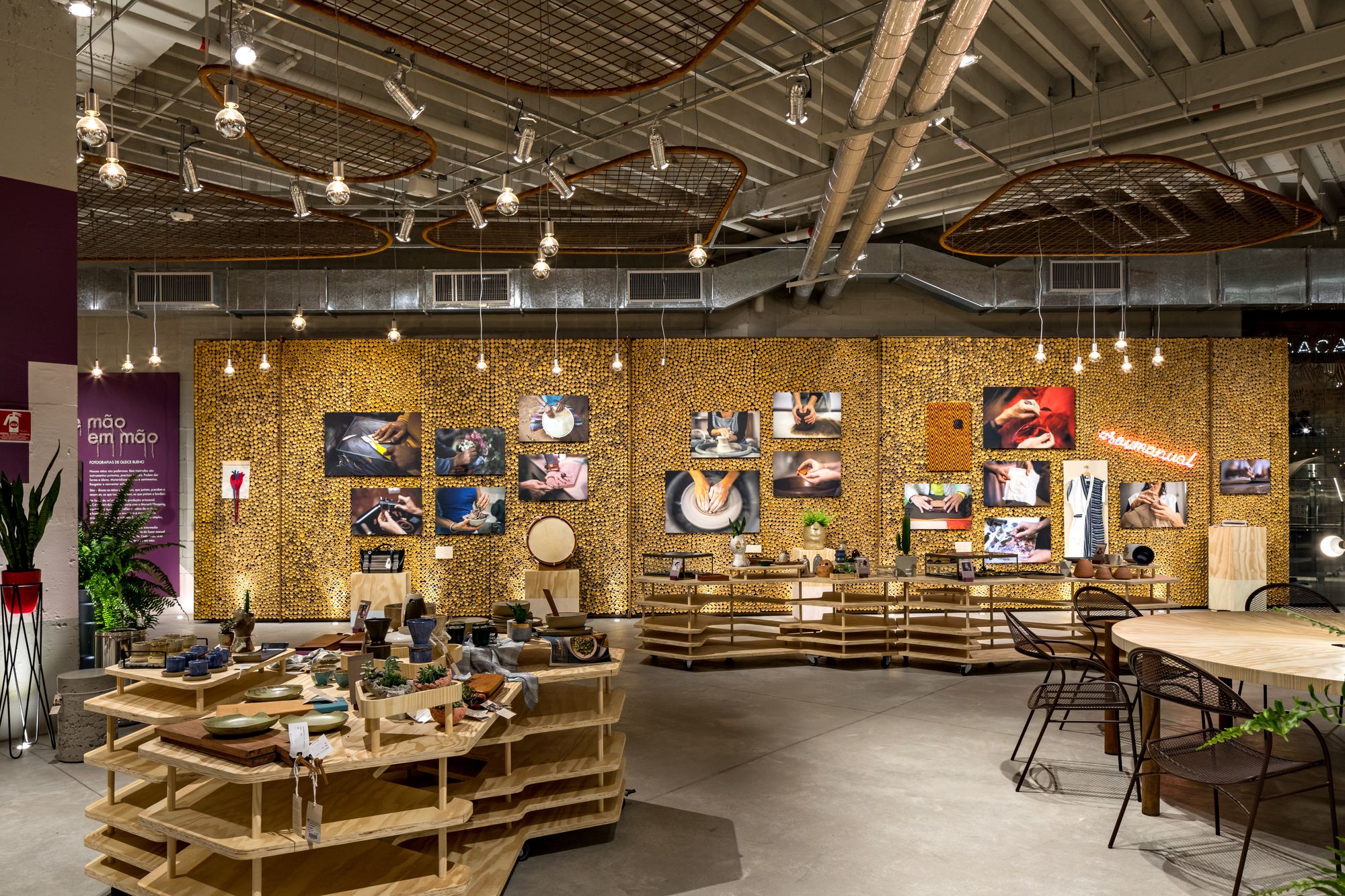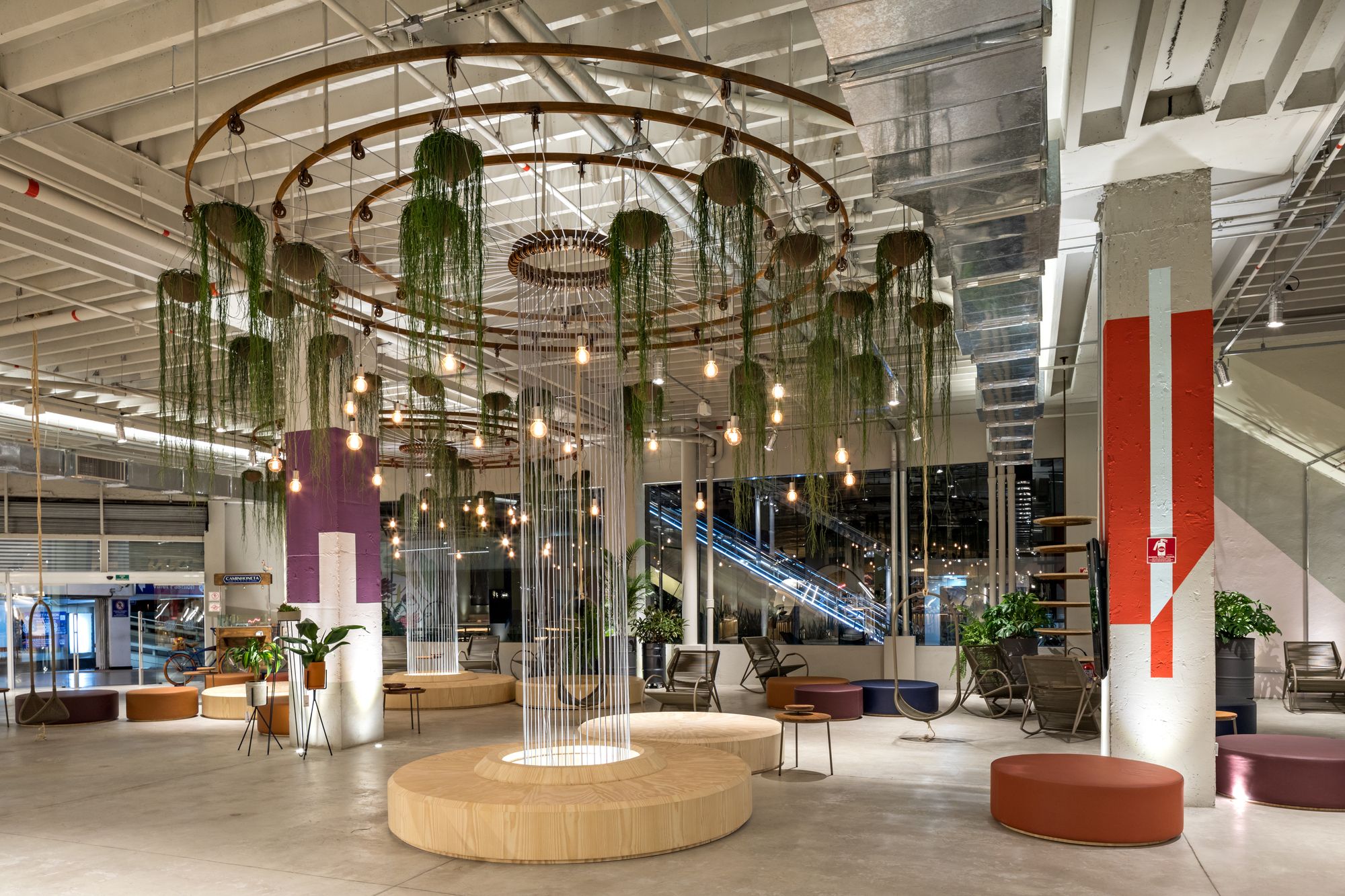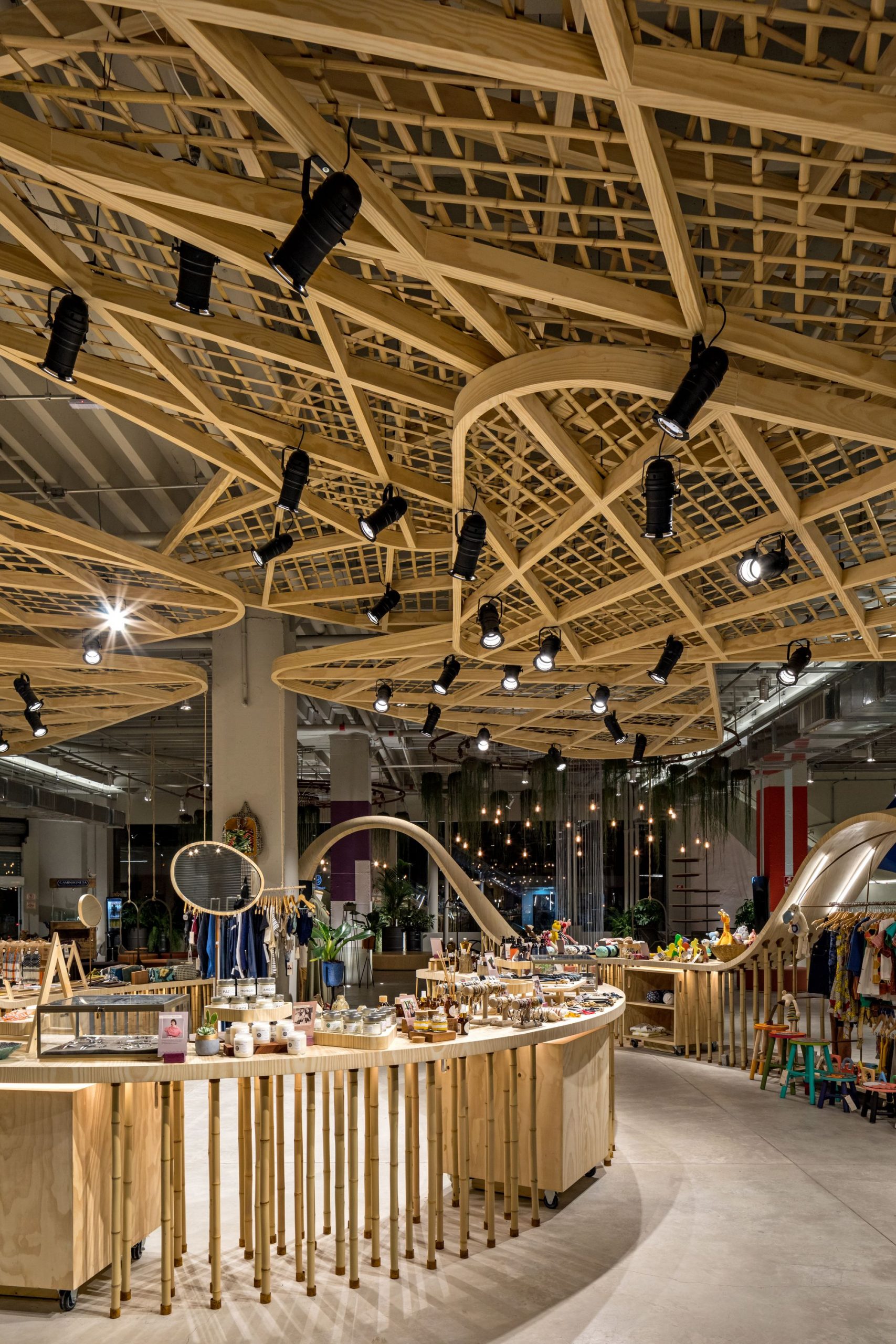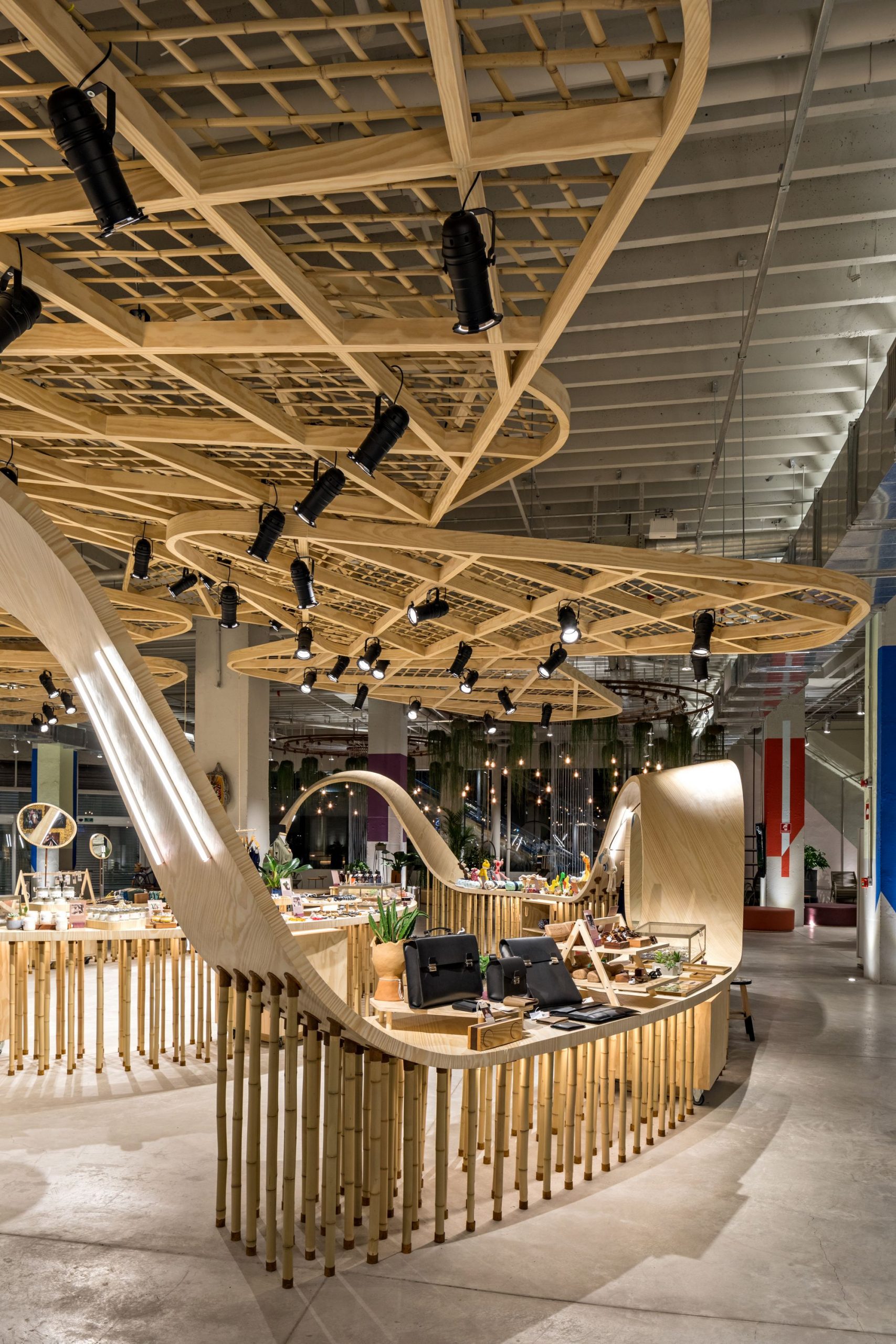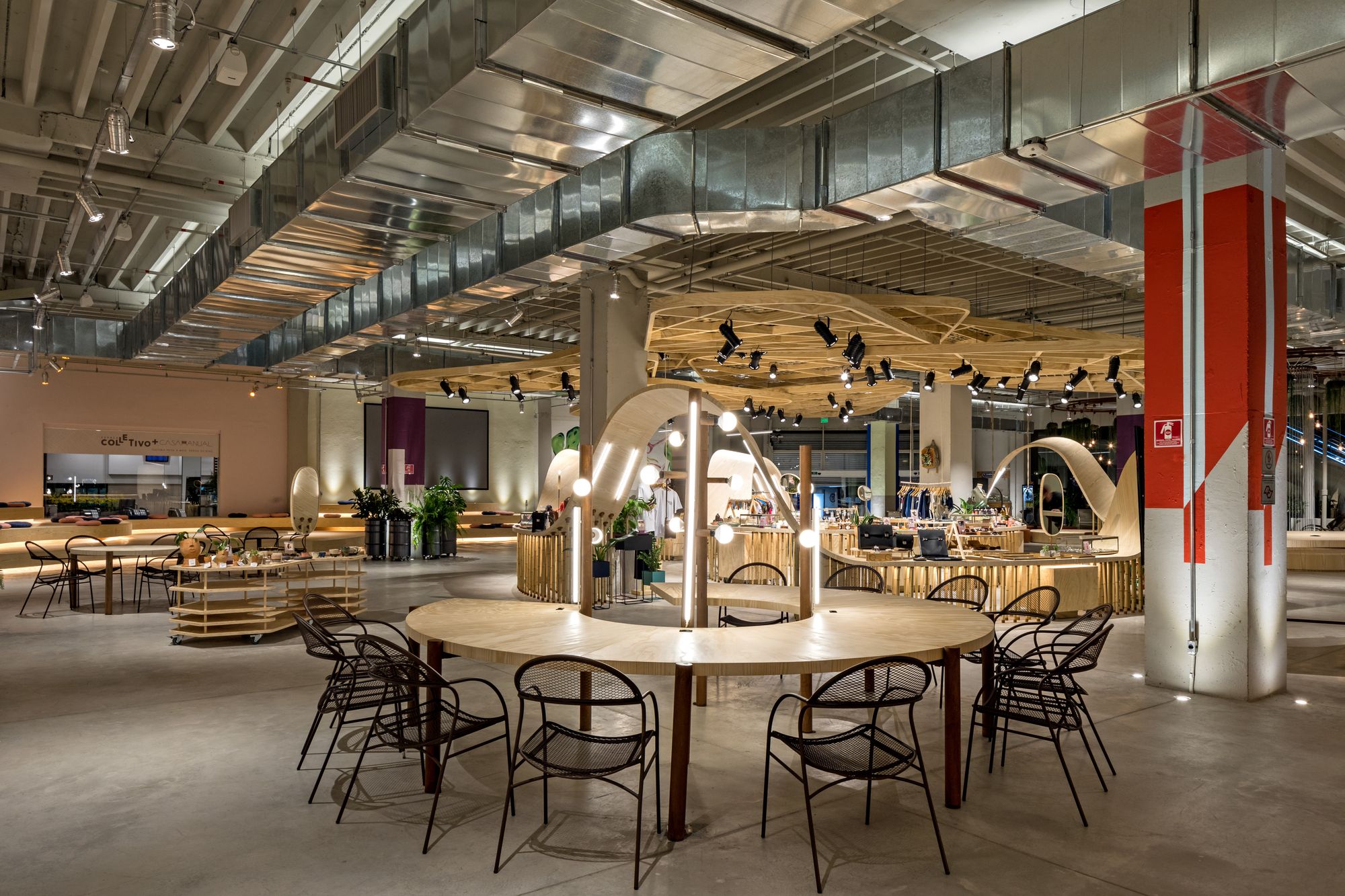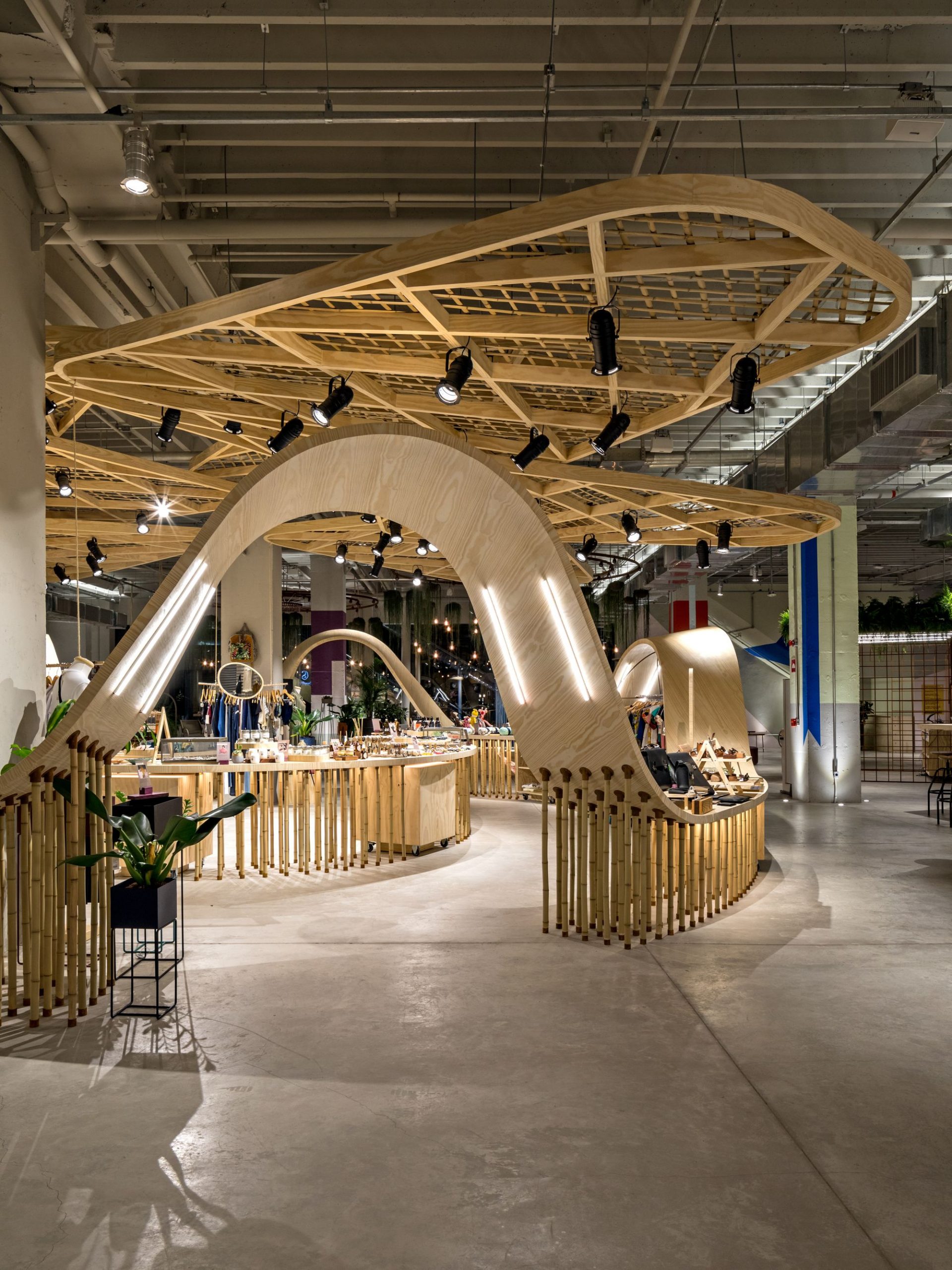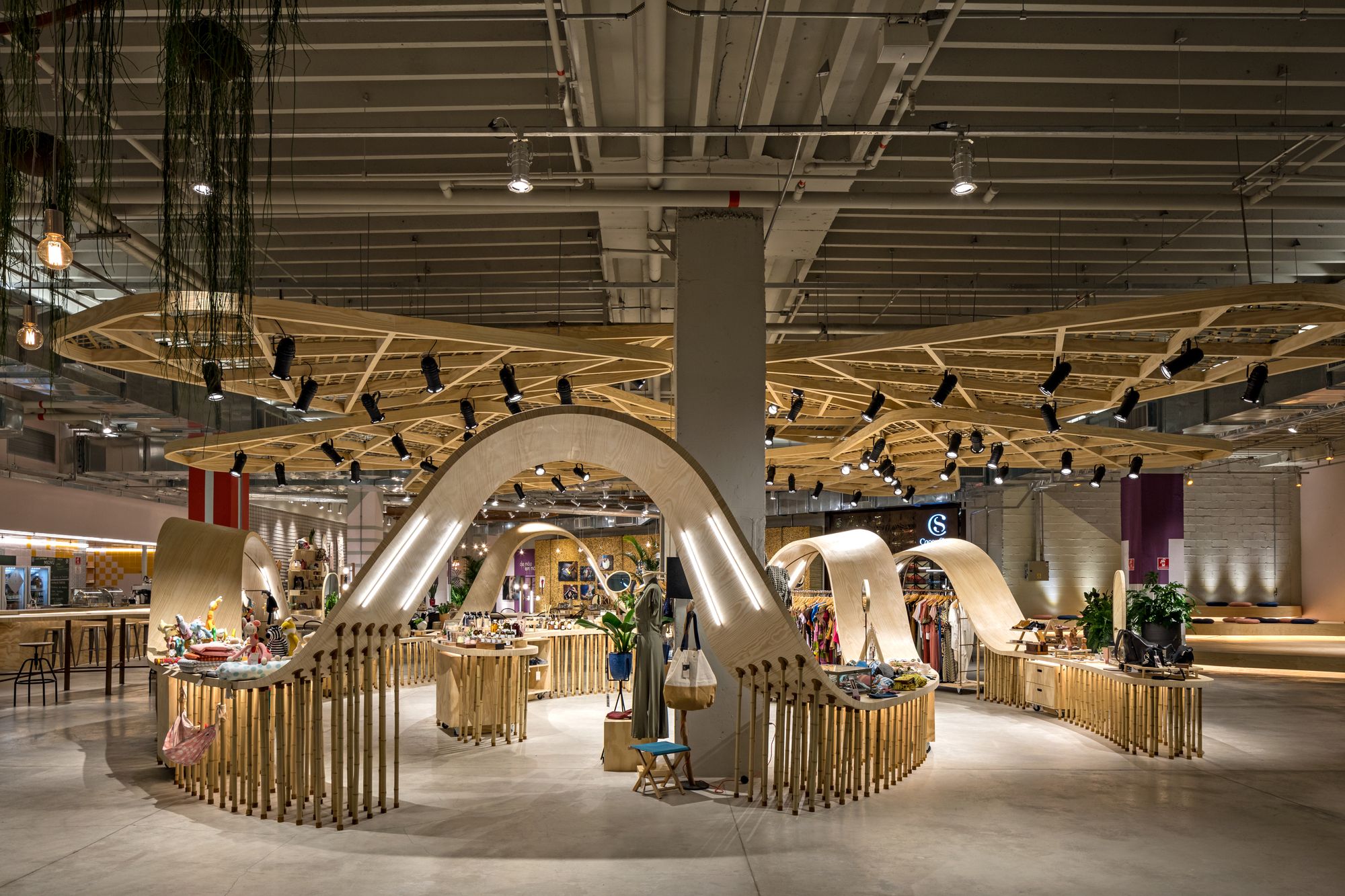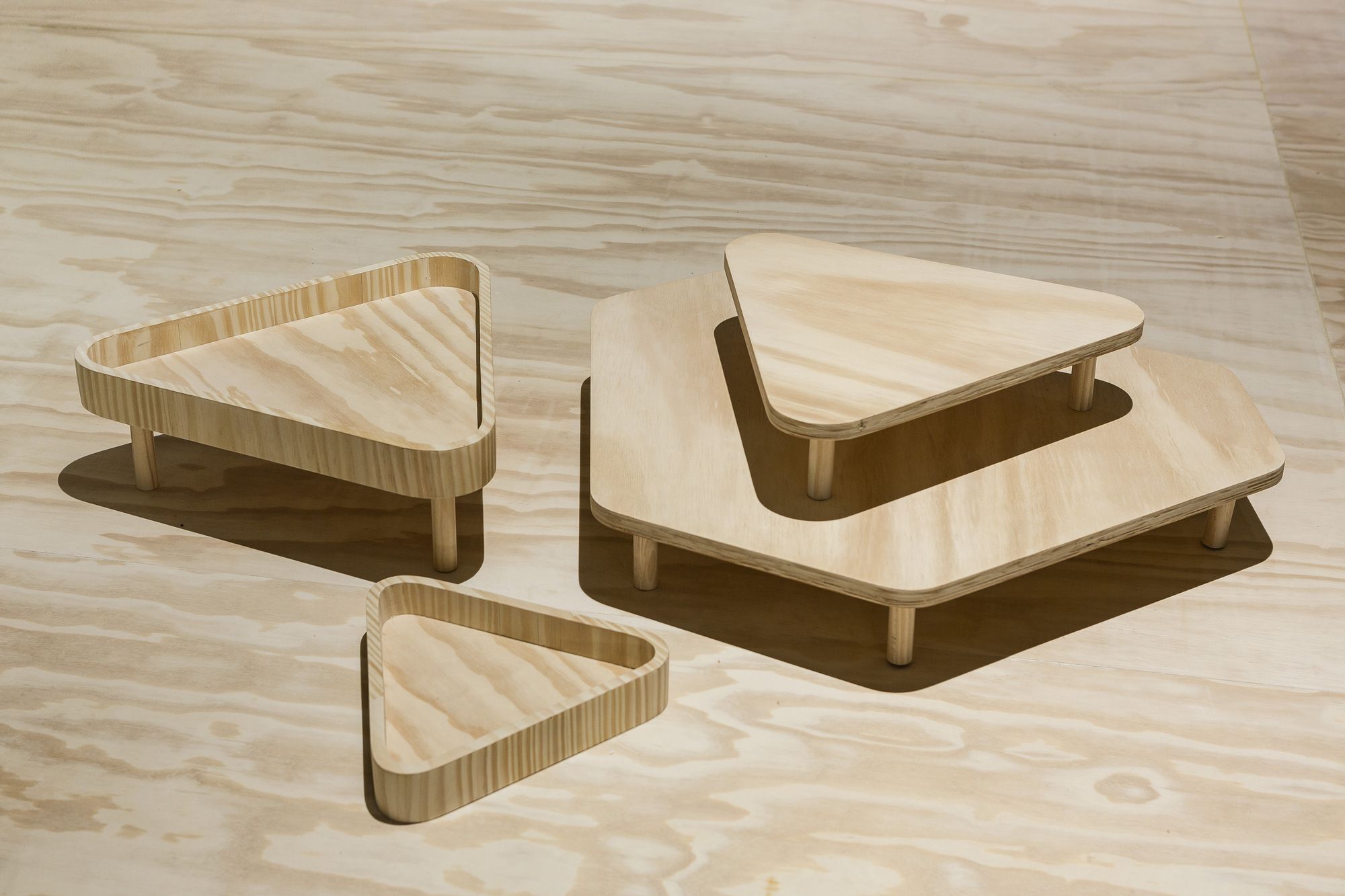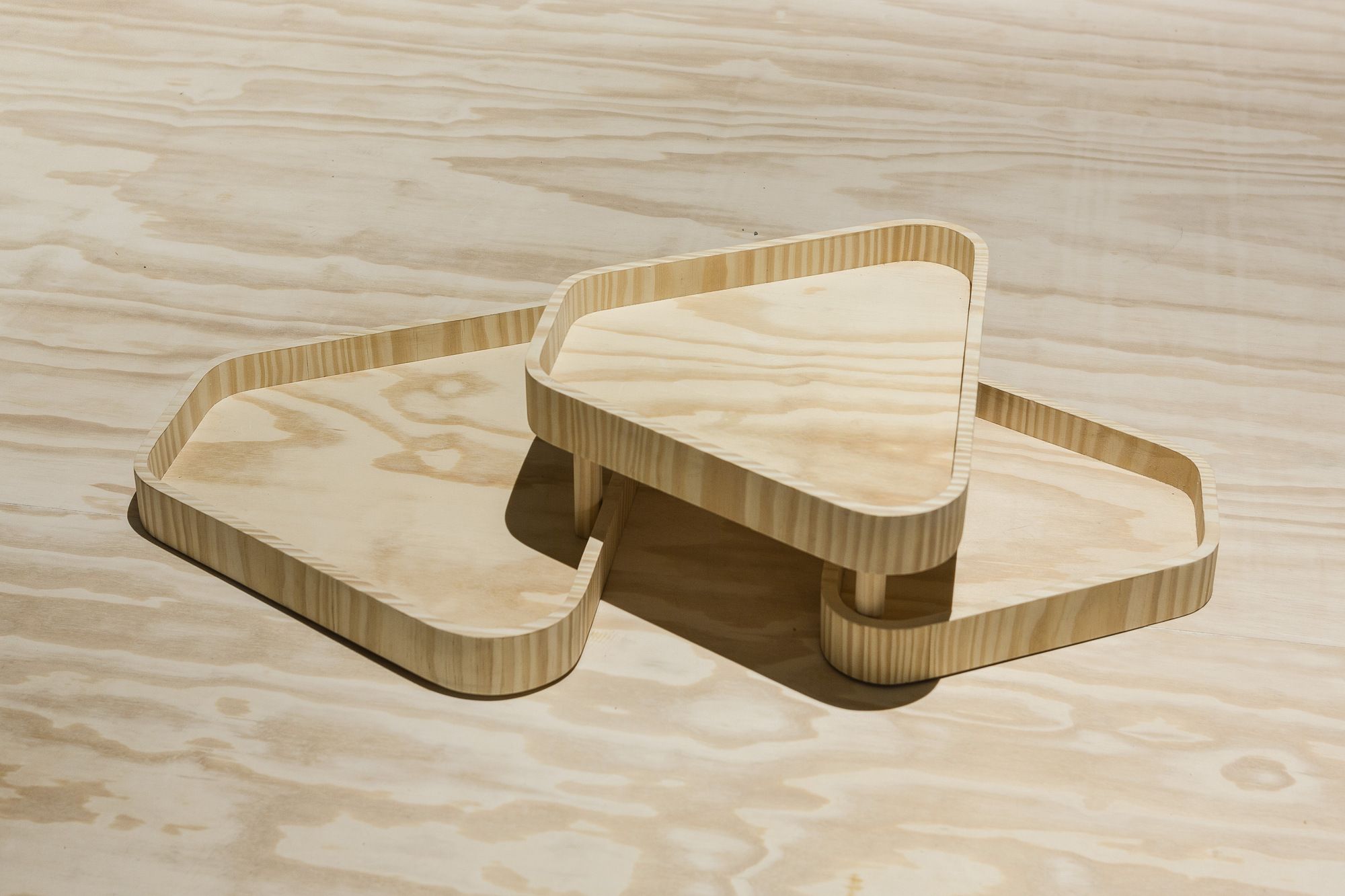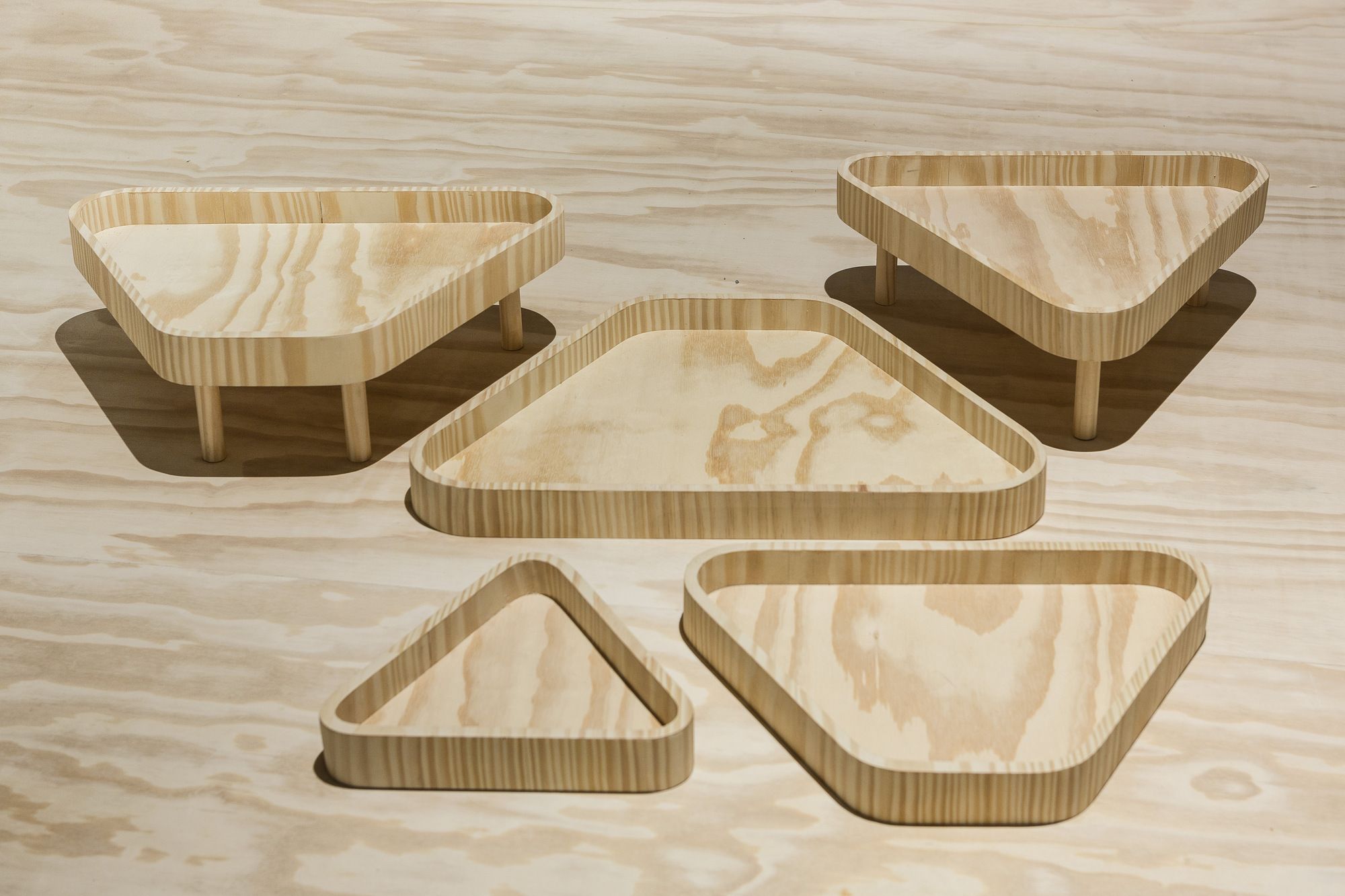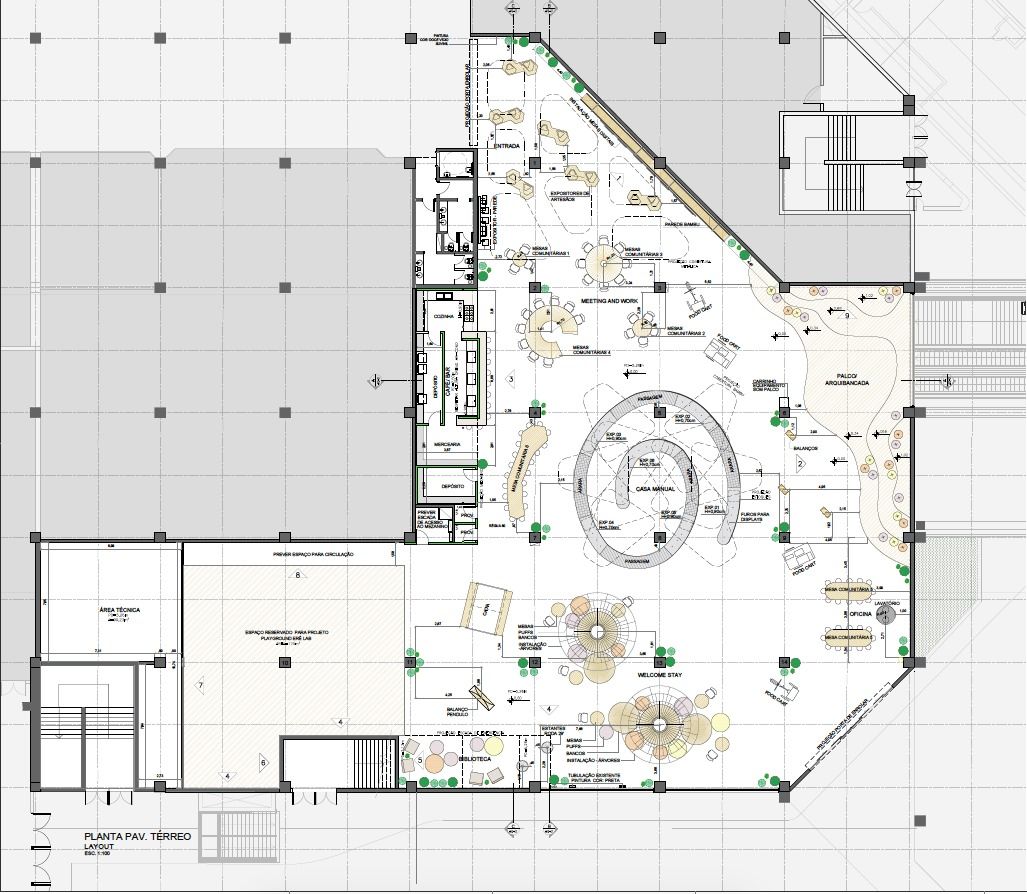Designed by Galeazzo Design, In December 2018, the first contemporary craft-experience-shop in Brazil, Espaço Colletivo – Casa Manual, opened at Morumbi Shopping, in São Paulo, with areas dedicated to shopping, food, workshops, seminars, play, concerts, work, and relaxation.
“Experience-environments are the future for architecture and design,” says designer Fabio Galeazzo, creative director of the Galeazzo Design studio, who, called architect André Nucci and surface designer Dani Gautio, to act as co-creators to Espaço Colletivo – Casa Manual,. Together, they created a space of approximately 1800 m2 at the ground floor of Morumbi Shopping, with apparent structures showing imperfections on the walls, as well as the hydraulic, electric, and air-conditioning infrastructure. Furniture and structure mainly used wood, plywood, bamboo, and iron bars. Old walls were replaced by glass, bringing the movement and day-and-night lights into the site, and vice-versa. Retaining walls, with an irregular surface and showing the marks of bricks and blocks, pastel-colors were used in contrast with hot colors. Little by little, these walls were filled with murals created by artists, which surprise mall clients, on a weekly basis. The idea is to have an ever-changing space.
 Upon entering Espaço Colletivo, from inside the mall, the visitor is greeted by a bamboo wall, approximately 12 m long and 4 m high. There, the team of Casa Manual, focused on crafts and inspired by street markets, proposes new experiences, acquaintances, and knowledge-sharing, based on the handmade culture.
Upon entering Espaço Colletivo, from inside the mall, the visitor is greeted by a bamboo wall, approximately 12 m long and 4 m high. There, the team of Casa Manual, focused on crafts and inspired by street markets, proposes new experiences, acquaintances, and knowledge-sharing, based on the handmade culture.
Over a spiraled shelf, ten overlapping wood and bamboo petals represent a dreamcatcher.
At this spiral shelf and dream catcher setting, craft products are available, from a selection curated by the Casa Manual team – from clothing to utilities, household items, toys, cosmetics, and much more. Surrounding this scenario, there are multiple-function areas, articulated between them and called “ocas do Fazer”[creative huts], which aim to emotionally connect the visitor to references in the outside.
 At the learn hut, craftsmen daily present classes and workshops; at the nurture hut, there is a restaurant/café/emporium, are decorated with tiles on the ceiling and the walls, with designs inspired by traditional calico fabric, offering delicious vegan meals, as well as the sale of sauces and marmalade; at the sing and listen to hut, a stage and stand are used for musical performances and seminars; at the play hut, there are toys developed by Erê group; at the leisure and relax hut, two large sculptures made out of fabric-covered wire, with hanging transparent lamps and plants that remind us of large trees, community desks, ottomans, swings, and chairs, are inviting to have light conversations or even small work meetings.
At the learn hut, craftsmen daily present classes and workshops; at the nurture hut, there is a restaurant/café/emporium, are decorated with tiles on the ceiling and the walls, with designs inspired by traditional calico fabric, offering delicious vegan meals, as well as the sale of sauces and marmalade; at the sing and listen to hut, a stage and stand are used for musical performances and seminars; at the play hut, there are toys developed by Erê group; at the leisure and relax hut, two large sculptures made out of fabric-covered wire, with hanging transparent lamps and plants that remind us of large trees, community desks, ottomans, swings, and chairs, are inviting to have light conversations or even small work meetings.
 NOW, WHY HUTS?
NOW, WHY HUTS?
After investigating primitive spiraled movements, the Galeazzo Design team was inspired by typical indigenous dances in Brazilian culture where, at the central square, the natives dance towards the center, creating a spiraled line. Huts (in Portuguese “ocas”, typical indigenous homes) were distributed around this center. Thus, like typical indigenous architecture, space was though and created from the center outwards, where the large spiral shelf, built in plywood and held by over 700 bamboos, is floating, getting attention from all the enter the area and inviting each person to create its own story following interaction with space.
This was one of the first projects where Fabio Galeazzo has applied his research developed during his Masters’ degree, on how environments may interact with their users, and how the users may adopt the environment as part of themselves and their creative process. This is the fun part: those who get there adopt the area for themselves, have an experience and feel like part of the space. Like a dance developing from the rhythm of each one.
 Project Info:
Project Info:
Interior Design: Galeazzo Design
Location: São Paulo, Brazil
Lead Architect: André Nucci Coauthors Fabio Galeazzo, Dani Gautio Project Team Amanda Luz, Danielle Urbaneja, Karine Droique
Area: 19375.04 ft2
Project Year: 2018
Photographs: Jorge Joubert, Fran Parente
Manufacturers: MAC Móveis
Engineering: Saeng Engenharia
Lighting Engineering Project: Rafael serradura
Clients: Shopping Morumbi / Multiplan
Project Name: Colletive Space + Manual House
photography by © Jorge Joubert
photography by © Jorge Joubert
photography by © Jorge Joubert
photography by © Jorge Joubert
photography by © Jorge Joubert
photography by © Jorge Joubert
photography by © Jorge Joubert
photography by © Jorge Joubert
photography by © Jorge Joubert
photography by © Jorge Joubert
photography by © Jorge Joubert
photography by © Jorge Joubert
photography by © Jorge Joubert
photography by © Jorge Joubert
photography by © Jorge Joubert
photography by © Jorge Joubert
photography by © Jorge Joubert
photography by © Jorge Joubert
photography by © Jorge Joubert
photography by © Jorge Joubert
photography by © Fran Parente
photography by © Fran Parente
photography by © Fran Parente
photography by © Fran Parente
photography by © Fran Parente
photography by © Jorge Joubert
photography by © Fran Parente
photography by © Fran Parente
photography by © Fran Parente
photography by © Fran Parente
photography by © Jorge Joubert
photography by © Fran Parente
photography by © Jorge Joubert
photography by © Fran Parente
photography by © Fran Parente
photography by © Fran Parente
photography by © Fran Parente
photography by © Fran Parente
photography by © Fran Parente
photography by © Fran Parente
photography by © Fran Parente
photography by © Fran Parente
photography by © Fran Parente
photography by © Jorge Joubert
photography by © Jorge Joubert
photography by © Jorge Joubert
Plan


